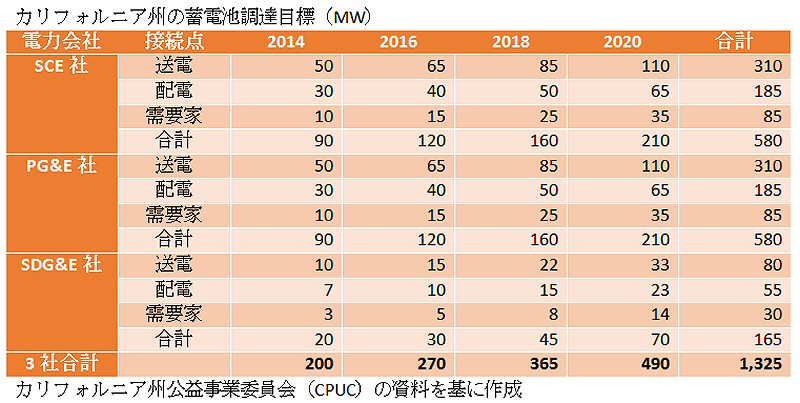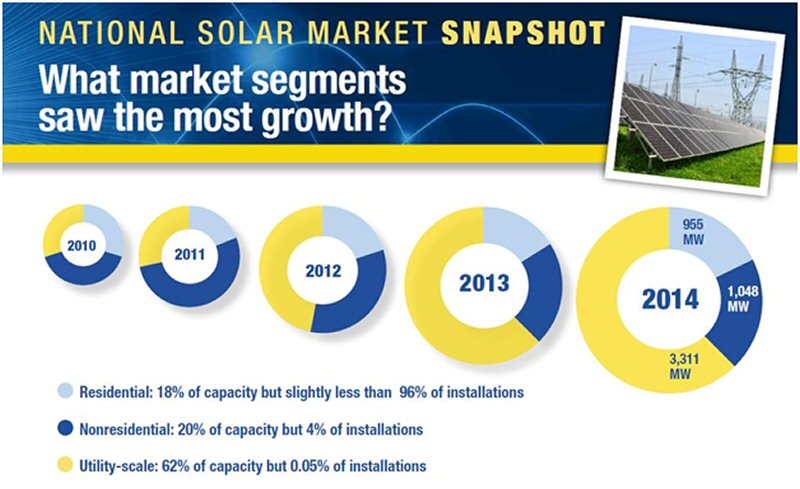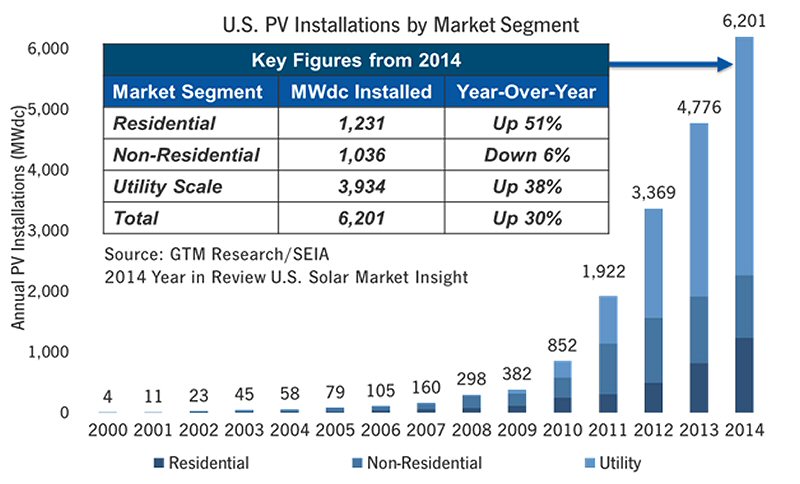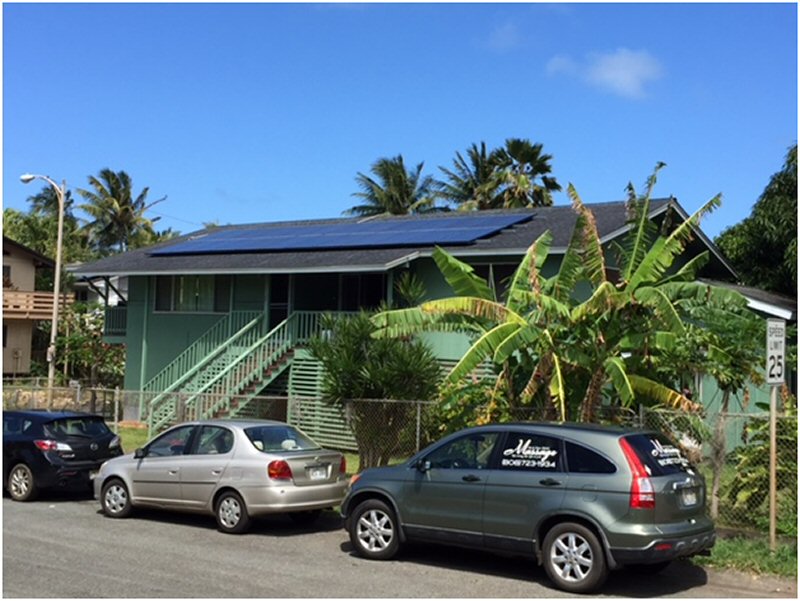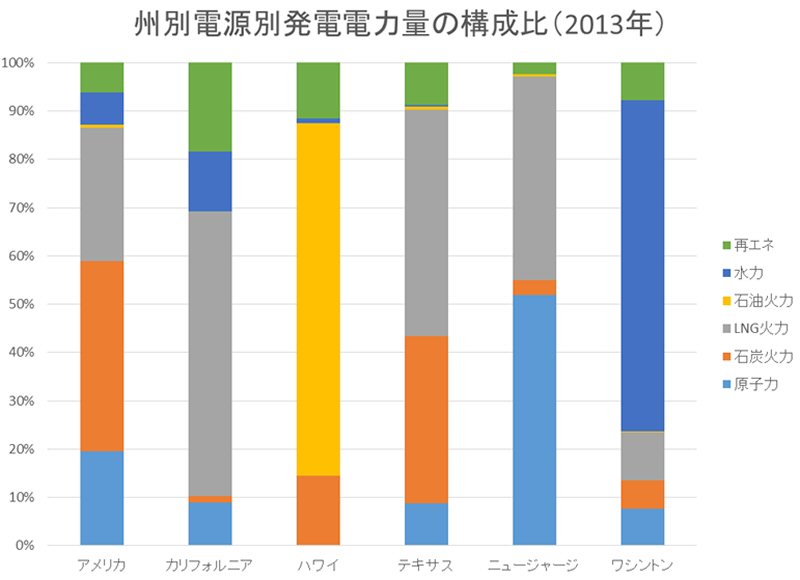Published at Nikkei Technology Online --- クリスマスを一週間後に控えた12月18日。米国の太陽光発電産業は思わぬクリスマスプレゼントを手に入れた。それは「Investment Tax Credit(ITC)」と呼ばれる「再生可能エネルギー導入投資税控除」の延長法案が、米連邦議会の土壇場で可決されたのだ。
「ITC」はこれまでも米国太陽光発電市場の重要なドライバー(けん引役)として、その市場拡大に大きく貢献してきた。実際、太陽光発電システムの急速な価格削減で、州政府などによる補助金制度がなくなっていくなか、ITCの市場への貢献度は大きく、米国太陽光発電産業のITCへの“依存度”も極めて高くなっていた。
ITCは、2006年から始まった連邦レベルの制度で、太陽光発電システムを含む、再生可能エネルギーの設備投資に適用される。太陽光発電システムの購入者であるホームオーナー、発電所所有者、さらに、システムリースを提供するプロジェクトデベロッパーは、システム設置にかかった投資額の30%を税額控除できる。
同制度は2008年にブッシュ政権下で延長・拡大されたが、2016年末に住宅用については終了し、非住宅用(商業、産業、そして発電事業用)は現在の30%から2017年1月1日から10%に下がることになっていた。
米太陽産業界は「2017年の市場縮小」を覚悟
国内外の太陽光発電市場のプレーヤーが「ITC30%」の恩恵を得るためには、2016年までに建設を完了させなくてはならない。そのため、2016年は駆け込みによる建設ラッシュが予想されていた。業界アナリストは、「ITCラッシュ」により米国の太陽光市場は2016年に日本を抜き、中国に次いでグローバル市場で第2位に拡大すると予測していた。.. Read More Here
Latest solar PV and other renewable energy market developments - policies, new products/services, business models, and market players - in the US and Japan
December 25, 2015
December 15, 2015
バックコンタクトの次は「屋根瓦のような製法」 米サンパワー社が2020年に向けた事業戦略を公表
Published at Nikkei Technology Online --- 11月に開催されたアナリスト向け決算・経営説明会で、米サンパワー(SunPower)社で最高経営責任者(CEO)を務めるTom Werner氏は「ソーラー産業は2020年までに2000億ドルの市場になる」と語り、今後の同社の事業戦略を発表した。
同社は、世界最高の変換効率を誇ったバックコンタクト方式の太陽光パネルの製造・供給で知られる世界的メーカーだが、太陽光発電所のEPC(設計・調達・施工)サービス、さらにO&M(運営・保守)も手掛けている。
加えて、過去1年の間に太陽光関連の新興ベンチャーなど3社を次々と買収し、新しい製造技術を手に入れるとともに、業務や住宅用での製品戦略を強化している。パネル製造と大規模システムから、戦略的に事業領域を拡大している。
「屋根瓦のよう」な製造技術で発電量を増やす
サンパワー社は数カ月前に買収した米コジェンラ(Cogenra)社のテクノロジーを使い、新しいタイプのパネルをラインアップに加えた。コジェンラ社はスタートアップ企業で、太陽光と太陽熱のハイブリッドシステムに関する研究開発から始まり、「低集光型太陽光発電(LCPV:Low-concentrated photovoltaic)」「セルの新しい製造工程」、そして「1軸追尾架台システム」の開発にも手を広げた。
「新しい製造工程」とは、セルを「積み重ね」によって接続するのもで、従来のようにセルとセルを平板状の銅線でできた接続線(バスバー電極)で繋がない。Werner氏はこの製法を「屋根の瓦のよう」と表現していた(図1)。...Read More Here
同社は、世界最高の変換効率を誇ったバックコンタクト方式の太陽光パネルの製造・供給で知られる世界的メーカーだが、太陽光発電所のEPC(設計・調達・施工)サービス、さらにO&M(運営・保守)も手掛けている。
加えて、過去1年の間に太陽光関連の新興ベンチャーなど3社を次々と買収し、新しい製造技術を手に入れるとともに、業務や住宅用での製品戦略を強化している。パネル製造と大規模システムから、戦略的に事業領域を拡大している。
「屋根瓦のよう」な製造技術で発電量を増やす
サンパワー社は数カ月前に買収した米コジェンラ(Cogenra)社のテクノロジーを使い、新しいタイプのパネルをラインアップに加えた。コジェンラ社はスタートアップ企業で、太陽光と太陽熱のハイブリッドシステムに関する研究開発から始まり、「低集光型太陽光発電(LCPV:Low-concentrated photovoltaic)」「セルの新しい製造工程」、そして「1軸追尾架台システム」の開発にも手を広げた。
「新しい製造工程」とは、セルを「積み重ね」によって接続するのもで、従来のようにセルとセルを平板状の銅線でできた接続線(バスバー電極)で繋がない。Werner氏はこの製法を「屋根の瓦のよう」と表現していた(図1)。...Read More Here
 |
| 図1●従来の多結晶太陽電池セル接続方とPシリーズのセル積み重ね式の比較(出所:サンパワー社) |
December 14, 2015
Popular Hot Springs in Japan Co-exist with Binary Geothermal Power Plants
Published at Renewable Energy World --- Japanese people love Onsen, or hot springs, to relax and feel rejuvenated in naturally heated, spring water, which is rich in minerals. Hot springs are located in mountains, next to rivers, near oceans, and basically everywhere due to the abundance of active volcanoes present in Japan. In fact, there are 27,405 identified hot spring wells and over 21,000 combined hot spring spas and inns, according to 2014 data published by the nation’s Ministry of Environment.
Over 126 million people visit Onsens annually, spending considerable amount of money at spas, hotels, restaurants, and shops at hot springs. Because of the significant economic activities related to tourism, local communities didn’t think that Onsen business and geothermal power plants could co-exist.
They were concerned that deployment of geothermal power plants would change the quality and compositions of spring water, which contains a lot of organic matter that is known to provide health and beauty benefits. Most importantly, the community feared that geothermal power plants would dry up their precious spring water wells.
Their concerns were eliminated when binary geothermal power plants were introduced.
Nation’s First Binary System Installed at an Evacuation Site
Yumura Onsen in Shinonsen town, Hyogo prefecture, installed two 20 kW (a total of 40 kW) binary geothermal power plants at Yakushiyu, a day spa, which also is a state designated evacuation site where people in the community can assemble in the case of emergencies or disasters.
Binary geothermal power plants, or “Onsen” Binary plants, use chemical fluids known as a second liquid (e.g., Isobutene and n-Pentane) that boils at a lower temperature than water. Hot spring water passes through a heat exchanger and heats up the second liquid in a closed loop. Heat from the geothermal water causes the secondary fluid to flash to vapor, which then drives the turbines, and subsequently the generators. The vapor is condensed back to liquid and begins the cycle again. Because this is a closed-loop system, virtually nothing is emitted to the atmosphere....Read More Here
Over 126 million people visit Onsens annually, spending considerable amount of money at spas, hotels, restaurants, and shops at hot springs. Because of the significant economic activities related to tourism, local communities didn’t think that Onsen business and geothermal power plants could co-exist.
They were concerned that deployment of geothermal power plants would change the quality and compositions of spring water, which contains a lot of organic matter that is known to provide health and beauty benefits. Most importantly, the community feared that geothermal power plants would dry up their precious spring water wells.
Their concerns were eliminated when binary geothermal power plants were introduced.
Nation’s First Binary System Installed at an Evacuation Site
Yumura Onsen in Shinonsen town, Hyogo prefecture, installed two 20 kW (a total of 40 kW) binary geothermal power plants at Yakushiyu, a day spa, which also is a state designated evacuation site where people in the community can assemble in the case of emergencies or disasters.
 |
| “Onsen” Binary Geothermal Systems (2 x 20 kW), Credit: The Town of Shinonsen |
Binary geothermal power plants, or “Onsen” Binary plants, use chemical fluids known as a second liquid (e.g., Isobutene and n-Pentane) that boils at a lower temperature than water. Hot spring water passes through a heat exchanger and heats up the second liquid in a closed loop. Heat from the geothermal water causes the secondary fluid to flash to vapor, which then drives the turbines, and subsequently the generators. The vapor is condensed back to liquid and begins the cycle again. Because this is a closed-loop system, virtually nothing is emitted to the atmosphere....Read More Here
November 30, 2015
米大学最大の自家消費用メガソーラーが稼働、「ゼロカーボン」目指す 自動追尾システムとパネル洗浄ロボットを導入
Published at Nikkei Technology Online --- 11月20日、カリフォルニア大学デイビス校(University of California, Davis)は連系出力16.3MWのメガソーラー(大規模太陽光発電所)の竣工式を開催した(図1)。このメガソーラーは、同大学の電力需要の14%を満たすことができ、カリフォルニア大学の中で一番大きな太陽光発電システムである。さらに、電力会社に売電するのではなく、自家消費用に開発されたという点では、米国の大学の中で最大規模になる。
デイビス校は、米国で最大規模の州立大学群であるカリフォルニア大学(University of California) システムに属する10校のうちの1つである。同校はカリフォルニア州の州都サクラメント市の約25km西部に位置する。総学生数3万4000人以上をかかえ、特に農学で有名である。
このメガソーラーは米サンパワー(SunPower)社によって開発され、同校キャンパスの南側に広がる62エーカーの刈り取りが終わった畑に設置された。同社は、高変換効率の太陽光パネルの製造・供給で知られる世界的メーカーだが、太陽光発電所の設計・調達・建設(EPC)サービスも手掛けている。
パネル洗浄ロボットで発電効率が15%向上
サンパワー社は、「オアシス」と呼ばれるメガソーラーの開発・施工プロセスを簡素化、低コスト化したテクノロジーを持っており、今回のメガソーラー建設では、このノウハウを採用した。架台システムは、太陽を1軸で追尾する自動追尾システムを使った。その効果で、固定式に比べ最高で25%もの発電効率の向上を実現できる。
さらに、2年前に同社が買収した米Greenbotics社の開発した太陽光パネル洗浄ロボットを使った場合、従来のパネル洗浄方法に比べ、水使用量が75%少なくなるうえに、発電効率を15%向上する効果もあるという...。See More Here
デイビス校は、米国で最大規模の州立大学群であるカリフォルニア大学(University of California) システムに属する10校のうちの1つである。同校はカリフォルニア州の州都サクラメント市の約25km西部に位置する。総学生数3万4000人以上をかかえ、特に農学で有名である。
このメガソーラーは米サンパワー(SunPower)社によって開発され、同校キャンパスの南側に広がる62エーカーの刈り取りが終わった畑に設置された。同社は、高変換効率の太陽光パネルの製造・供給で知られる世界的メーカーだが、太陽光発電所の設計・調達・建設(EPC)サービスも手掛けている。
パネル洗浄ロボットで発電効率が15%向上
サンパワー社は、「オアシス」と呼ばれるメガソーラーの開発・施工プロセスを簡素化、低コスト化したテクノロジーを持っており、今回のメガソーラー建設では、このノウハウを採用した。架台システムは、太陽を1軸で追尾する自動追尾システムを使った。その効果で、固定式に比べ最高で25%もの発電効率の向上を実現できる。
さらに、2年前に同社が買収した米Greenbotics社の開発した太陽光パネル洗浄ロボットを使った場合、従来のパネル洗浄方法に比べ、水使用量が75%少なくなるうえに、発電効率を15%向上する効果もあるという...。See More Here
November 24, 2015
Japan Passes FIT Peak: Now What for 87 GW Renewable Queue, 2030 Energy Mix?
Published at RenewableEnergyWorld.com --- Between July 2013 and July 2015, the Japanese feed-in tariff (FIT) program has supported the installation of over 22 GW worth of renewable energy nationwide, according to the latest data released by the Ministry of Economy, Industry and Trade (METI). That means, in only three years, the nation doubled its renewable energy capacity. Those renewable energy projects have cumulatively generated 66,854 GWh of renewable electricity, roughly equivalent to the annual electricity consumption of the state of Minnesota, ranked 19th in the U.S. for clean power generation.
The FIT program heavily skewed toward solar
Although the program supports five renewable technologies: solar photovoltaic (PV), wind, hydro (below 30 MW), geothermal and biomass, PV accounts for 96 percent of the 22 GW of installed capacity in the last 37 months.
The FIT program aided Japan in its ascent towards becoming one of the world’s biggest PV markets in 2013 and 2014. According to METI’s data, Japan installed 8.51 GW of PV under the FIT program. In the first seven months of this year, Japan has already installed a little over 6 GW. If Japan manages to install 1 GW of PV every month from August to December of this year, Japan will hit, as many PV industry analysts have predicted, 10 GW and solidify its position at the top of the list again this year....Read More Here
 |
| Source: Japan METI |
Although the program supports five renewable technologies: solar photovoltaic (PV), wind, hydro (below 30 MW), geothermal and biomass, PV accounts for 96 percent of the 22 GW of installed capacity in the last 37 months.
 |
| Source: Japan METI |
The FIT program aided Japan in its ascent towards becoming one of the world’s biggest PV markets in 2013 and 2014. According to METI’s data, Japan installed 8.51 GW of PV under the FIT program. In the first seven months of this year, Japan has already installed a little over 6 GW. If Japan manages to install 1 GW of PV every month from August to December of this year, Japan will hit, as many PV industry analysts have predicted, 10 GW and solidify its position at the top of the list again this year....Read More Here
November 18, 2015
ハワイ州で“夜間用メガソーラー”を建設へ 蓄電池併設で夜間のピークを賄い、石油火力の出力抑制
Published at Nikkei Technology --- ハワイ州は太陽光発電産業において「未来からの絵葉書」と呼ばれる。その理由は太陽光発電の大規模導入により将来、本土で起こりうると予想されているイベントが、このハワイ州で全て既に起きているからだ。イベントとは、グリッドパリティー、分散型太陽光発電システムの接続保留、メガソーラー(大規模太陽光発電所)への蓄電池併設による出力抑制防止など──。ハワイ州では、全米の太陽光発電設置容量の50%以上を占める本土カリフォルニア州よりも一足先に、これらを経験済みで、本土の電力会社はハワイ州の行動から目が離せないのである。
そんなハワイ州でまた「全米初」のイベントが起ろうとしている。
太陽光発電は、日照条件で出力変動し、さらに必要な時に発電できないという欠点がある。しかし、蓄電池の併設により、メガソーラーの急峻な出力変動を平滑化したり、または昼間の余剰電力を貯めておき夜間に放電したりすることが可能になった。既に米国本土でも、蓄電池を併設する手法は採用されている。
しかし、今回のハワイでのケースは、蓄電池の併設によって昼間の発電を「夜間用」に使用する。つまり、メガソーラーを「夜間用電源」として活用するものだ。
ハワイ諸島の最北端に位置するカウアイ島をサービス管轄に持つ電力会社Kauai Island Utility Coop(KIUC)社は、メガソーラーと蓄電池を合わせた長期電力購入契約を米SolarCity社と交わしたことを今年9月に発表した。米SolarCity社は、米国の住宅用太陽光市場でシェアトップを握る企業だ。
今回の契約は、KIUK社とSolarCity社との2回目のパートナーシップを意味する。KIUC社は、2014年に運転開始した「Koloa」と呼ばれる、SolarCity社の出力14MW(連系出力12MW)のメガソーラーから電力を購入し始めたばかりである(図1)。
17MWのメガソーラーに52MWhの蓄電池を併設
蓄電池の供給先はまだ発表されていないが、米Tesla社の可能性か高いと予想されている。それは、テスラ社のCEO(最高経営責任者)、Elon Musk氏はSolarCity社のCEOを務めるRive氏の従兄弟にあたり、さらに、SolarCity社の会長を務める。つまり、両社は親密な関係がある。...Read More Here
そんなハワイ州でまた「全米初」のイベントが起ろうとしている。
太陽光発電は、日照条件で出力変動し、さらに必要な時に発電できないという欠点がある。しかし、蓄電池の併設により、メガソーラーの急峻な出力変動を平滑化したり、または昼間の余剰電力を貯めておき夜間に放電したりすることが可能になった。既に米国本土でも、蓄電池を併設する手法は採用されている。
しかし、今回のハワイでのケースは、蓄電池の併設によって昼間の発電を「夜間用」に使用する。つまり、メガソーラーを「夜間用電源」として活用するものだ。
ハワイ諸島の最北端に位置するカウアイ島をサービス管轄に持つ電力会社Kauai Island Utility Coop(KIUC)社は、メガソーラーと蓄電池を合わせた長期電力購入契約を米SolarCity社と交わしたことを今年9月に発表した。米SolarCity社は、米国の住宅用太陽光市場でシェアトップを握る企業だ。
今回の契約は、KIUK社とSolarCity社との2回目のパートナーシップを意味する。KIUC社は、2014年に運転開始した「Koloa」と呼ばれる、SolarCity社の出力14MW(連系出力12MW)のメガソーラーから電力を購入し始めたばかりである(図1)。
 |
| 14 MW-DC "Kola Solar" installed by SolarCity for Kauai Island Utility Corp |
蓄電池の供給先はまだ発表されていないが、米Tesla社の可能性か高いと予想されている。それは、テスラ社のCEO(最高経営責任者)、Elon Musk氏はSolarCity社のCEOを務めるRive氏の従兄弟にあたり、さらに、SolarCity社の会長を務める。つまり、両社は親密な関係がある。...Read More Here
November 16, 2015
メガソーラーの出力抑制を防ぐため、昼間の電気料金が夜間より安い! ハワイ州・カウアイ島の電力会社が、夜から昼への需要シフト促進
Published at Nikkei Technology --- ハワイ諸島の最北端に位置するカウアイ島では今までの常識を覆すようなことが起っている。
通常、需要ピーク時の需給バランスは、急な変化に対応できる輸入化石燃料による火力発電により調節される。ただ、石油火力は発電コストが相対的に高い。そこで、電力の供給コスト低減のため、夜間の電力割引などを通じて電力需要が最大になる昼間の需要を他の時間帯にシフトさせる「ピークシフト」が、推進されてきた。
しかし、カウアイ島では、午前9時から午後3時までの電気単価が夜間より「安い」のである。その理由はなんと太陽光発電にある。
カウアイ島をサービス管轄に持つ非営利協同組合運営の電力会社Kauai Island Utility Coop(KIUC)社は、ハワイ州で最大規模となる太陽光パネル出力14.5MW(連系出力12MW)のメガソーラーを今月初めに運転開始した(図1)
米国で太陽光発電浸透率が一番高いハワイ州
米国で、「太陽光発電の先端地域」と言ったら全米の50%以上のシェアを持つカリフォルニア州を思い浮かべる。だが、一人当たりの太陽光発電導入量で見ると、実はハワイ州がカリフォルニア州を大きく引き離しナンバーワンとなっている。これは、ハワイ州の12%の家庭が太陽光発電システムを設置しているのに匹敵する。..Read More Here
通常、需要ピーク時の需給バランスは、急な変化に対応できる輸入化石燃料による火力発電により調節される。ただ、石油火力は発電コストが相対的に高い。そこで、電力の供給コスト低減のため、夜間の電力割引などを通じて電力需要が最大になる昼間の需要を他の時間帯にシフトさせる「ピークシフト」が、推進されてきた。
しかし、カウアイ島では、午前9時から午後3時までの電気単価が夜間より「安い」のである。その理由はなんと太陽光発電にある。
カウアイ島をサービス管轄に持つ非営利協同組合運営の電力会社Kauai Island Utility Coop(KIUC)社は、ハワイ州で最大規模となる太陽光パネル出力14.5MW(連系出力12MW)のメガソーラーを今月初めに運転開始した(図1)
 |
| 14.5 MW-DC the largest PV installed in Hawaii, Credit: REC Solar |
米国で太陽光発電浸透率が一番高いハワイ州
米国で、「太陽光発電の先端地域」と言ったら全米の50%以上のシェアを持つカリフォルニア州を思い浮かべる。だが、一人当たりの太陽光発電導入量で見ると、実はハワイ州がカリフォルニア州を大きく引き離しナンバーワンとなっている。これは、ハワイ州の12%の家庭が太陽光発電システムを設置しているのに匹敵する。..Read More Here
November 11, 2015
Japan’s Local Energy Providers Turn to Distributed Generation
Published at Renewable Energy World --- Let the games begin! By fully deregulating its electricity sector by next April, Japan plans to break up the 60-years of regional monopolies controlled by 10 vertically-integrated, investor-owned utilities (IOUs). Just at the end of October, 778 companies registered as power producers and suppliers (PPS) in order to sell electricity for commercial consumers who have a demand over 50 kW. In addition, 48 companies have registered and been approved as retail electricity providers to sell electricity to residential and small business customers.
The Great East Japan Earthquake and Tsunami Disaster of March 2011 marked a pivotal turning point in the conception of the nation’s electricity infrastructure. Specifically, safety and reliable supply. Due to the temporary shut-down of the country’s nuclear power reactors, some areas of Japan experienced rolling blackouts as well as large electricity rate hikes due to the resulting supply constraint.
The deregulation in process is expected to stimulate competition as well as lower the cost of electricity. According to a national survey taken by Mizuho Information & Research Institute, Inc., 83 percent of respondents said that they would switch providers if prices decrease.
Regarding energy mixes, 36 percent of respondents said that they would switch to renewable electricity providers as long as prices remain similar to what they are now, while and 5 percent said that they would use renewable energy only if prices decreased. Separately, 32 percent of respondents said that they do not want to use electricity generated by nuclear power plants.
Return of Nuclear Power for Deregulation?
Although the nation is still working to clean up after the 2011 Fukushima No. 1 nuclear power incident, the Federal of Electric Power Companies of Japan (FEPC) claims that nuclear power is important for the nation’s energy independency and energy affordability. In fact, the incumbent utilities have gradually restarted some of the nuclear power plants, which were taken offline after the Fukushima disaster....Read More Here
The Great East Japan Earthquake and Tsunami Disaster of March 2011 marked a pivotal turning point in the conception of the nation’s electricity infrastructure. Specifically, safety and reliable supply. Due to the temporary shut-down of the country’s nuclear power reactors, some areas of Japan experienced rolling blackouts as well as large electricity rate hikes due to the resulting supply constraint.
The deregulation in process is expected to stimulate competition as well as lower the cost of electricity. According to a national survey taken by Mizuho Information & Research Institute, Inc., 83 percent of respondents said that they would switch providers if prices decrease.
Regarding energy mixes, 36 percent of respondents said that they would switch to renewable electricity providers as long as prices remain similar to what they are now, while and 5 percent said that they would use renewable energy only if prices decreased. Separately, 32 percent of respondents said that they do not want to use electricity generated by nuclear power plants.
 |
| Solar PV Installed on a Distribution Warehouse, Credit: Seikatsu Club Energy |
Return of Nuclear Power for Deregulation?
Although the nation is still working to clean up after the 2011 Fukushima No. 1 nuclear power incident, the Federal of Electric Power Companies of Japan (FEPC) claims that nuclear power is important for the nation’s energy independency and energy affordability. In fact, the incumbent utilities have gradually restarted some of the nuclear power plants, which were taken offline after the Fukushima disaster....Read More Here
November 4, 2015
再エネ電力を電力会社より安く販売できる「CCA制度」(後半) 地産地消を促すFITも取り入れる
Published at Nikkei Technology Online --- 米国では、地方自治体などが住民、ビジネス、さらに公共施設用の電力需要をまとめて購入できるコミュニティ・チョイス・アグリゲーション(Community Choice Aggregation:CCA)と呼ばれる法律がある。この法律により、地方自治体は自ら発電事業者から電力を調達し、地域独占電力会社の送配電網を使い、よりエコで手ごろな電気料金「チョイス」を直接、コミュニティーに提供できるようになった。
2002年のカリフォルニア州での導入を皮切りに、現在全米7州でCCAが実地されている(図1)。1300の地方自治体が、米国電力消費者の約5%に当たる顧客にCCAプログラムを通じて電力を供給している。
カリフォルニア州では現在、3つの自治体がCCAプログラムを運営している。同州北部に位置するマリーン郡は、最初にCCA制度を導入した地方自治体である。CCAプログラムはマリーンクリーンエネルギー(Marin Clean Energy:MCE)というNPO法人が運営しており、現在約17万5000軒の顧客をかかえる。地域の電力需要者は従来の大手電力会社から乗り換えることにより、今年は1060万ドル(約12.6億円)の電気料金削減と、6万t以上の温室効果ガス削減が見込まれている。.. Read More Here
2002年のカリフォルニア州での導入を皮切りに、現在全米7州でCCAが実地されている(図1)。1300の地方自治体が、米国電力消費者の約5%に当たる顧客にCCAプログラムを通じて電力を供給している。
 |
| Credit: Lean Energy U.S. |
カリフォルニア州では現在、3つの自治体がCCAプログラムを運営している。同州北部に位置するマリーン郡は、最初にCCA制度を導入した地方自治体である。CCAプログラムはマリーンクリーンエネルギー(Marin Clean Energy:MCE)というNPO法人が運営しており、現在約17万5000軒の顧客をかかえる。地域の電力需要者は従来の大手電力会社から乗り換えることにより、今年は1060万ドル(約12.6億円)の電気料金削減と、6万t以上の温室効果ガス削減が見込まれている。.. Read More Here
October 21, 2015
再エネ電力を電力会社より安く販売できる「CCA制度」(前半) 地方自治体が太陽光や風力をまとめ買いして消費者に提供
Published at Nikkei Technology --- 米カリフォルニア州では、2000~2001年に発生した電力危機が原因で小売全面自由化が保留になってしまった。民間電力会社の地域独占が継続され、家庭用電力消費者は電力購入の「チョイス(選択)」の機会を失った。
にもかかわらず、同州北部マリーン郡とその周辺の消費者は、電力の購入先を大手電力会社から地方自治体に乗り換え、環境に優しい再生可能エネルギーを選ぶことができる。乗り換えにより、今年は1060万ドル(約12.6億円)の電気料金と、6万t以上の温室効果ガス削減が見込まれている。
こうした「乗り換え」を可能にしているのが、コミュニティー・チョイス・アグリゲーション(Community Choice Aggregation: CCA)と呼ばれる法律だ。同法は、地方自治体などが住民、ビジネス、さらに公共施設用の電力需要をまとめて購入できることを規定したもので、2002年に成立した。この法律により、地方自治体は、自ら電力を発電、または発電事業者から電力を調達し、コミュニティーに「チョイス」を提供できるようになった。
顧客は17万5000軒を超える
カリフォルニア州北部に位置するマリーン郡は、州で最初にCCA制度を導入した地方自治体である。マリーン・クリーン・エネルギー(Marin Clean Energy:MCE)というNPO法人が2008年に設立され、2010年からコミュニティーの電力需要をまとめ、電力を調達し始めた。
「マリーン郡では、地球温暖化防止対策として建物部門からのCO2排出削減に取り組んでいます。電力消費によるCO2 排出量の抑制策として、再生可能エネルギーの導入を拡大できるCCAに着目しました」と、MCEでCEO(最高経営責任者)を務めるDawn Weisz氏は同機関の創設までの経緯について語った。...Read More Here
にもかかわらず、同州北部マリーン郡とその周辺の消費者は、電力の購入先を大手電力会社から地方自治体に乗り換え、環境に優しい再生可能エネルギーを選ぶことができる。乗り換えにより、今年は1060万ドル(約12.6億円)の電気料金と、6万t以上の温室効果ガス削減が見込まれている。
こうした「乗り換え」を可能にしているのが、コミュニティー・チョイス・アグリゲーション(Community Choice Aggregation: CCA)と呼ばれる法律だ。同法は、地方自治体などが住民、ビジネス、さらに公共施設用の電力需要をまとめて購入できることを規定したもので、2002年に成立した。この法律により、地方自治体は、自ら電力を発電、または発電事業者から電力を調達し、コミュニティーに「チョイス」を提供できるようになった。
 |
| How CCA Works; Credit: MCE |
顧客は17万5000軒を超える
カリフォルニア州北部に位置するマリーン郡は、州で最初にCCA制度を導入した地方自治体である。マリーン・クリーン・エネルギー(Marin Clean Energy:MCE)というNPO法人が2008年に設立され、2010年からコミュニティーの電力需要をまとめ、電力を調達し始めた。
「マリーン郡では、地球温暖化防止対策として建物部門からのCO2排出削減に取り組んでいます。電力消費によるCO2 排出量の抑制策として、再生可能エネルギーの導入を拡大できるCCAに着目しました」と、MCEでCEO(最高経営責任者)を務めるDawn Weisz氏は同機関の創設までの経緯について語った。...Read More Here
October 14, 2015
SPI 2015レポート 米国太陽光発電市場成長の陰―蓄電池は救えるか
Published at Solar Journal --- 9月中旬、4日間に渡り、北米最大の太陽光発電関連展示会「Solar Power International(SPI)」が米国カリフォルニア州アナハイム市で開催された。SPIは100以上の専門セミナーと数々の展示会・技術講演会、ネットワークイベントで構成されており、今回は600社以上の出展と1万5千人の来場者数を集めた。
全米太陽光発電協会(SEIA)によると、イベント開催時点で米国における太陽光発電累計設置容量は約23GW以上。また、これまでに米国で新設された電力発電所の40%が太陽光発電であり、これは近日の米国における太陽光発電産業の大きな成功を意味している。
成功を祝うかのように、イベントの中盤にはジョー・バイデン米副大統領が約4000人を前に熱い演説を行い、大きな可能性に満ちた太陽光発電産業にエールを送った。
成長が著しい米国市場だが、今後の成長を脅かす数々の問題も抱えている。
まず、「Investment Tax Credit(ITC)」と呼ばれる連邦レベルの投資税控除制度。これまでは、太陽光発電システム設置にかかる投資額の30%を税額控除できたが、この制度が延長されない場合、住宅用については来年末で終了、非住宅用については現在の30%から10%に下がってしまう。市場収縮のインパクトを避けるため、会場では「ITC延長を!」との声が上がっていた。
次に「ネットメータリング」制度。この制度は分散型システムによる”自産自消”を促すものあり、発電量で電力消費量を相殺しながら、余剰発電量を次月に繰り越し、電気料金を削減できる。しかし、太陽光発電の普及が加速する中で、余剰電力の買い取りを義務付けられている電力会社は、現在の買取価格を「小売価格」から「卸売価格」に引き下げる計画をしている。...Read More Here
全米太陽光発電協会(SEIA)によると、イベント開催時点で米国における太陽光発電累計設置容量は約23GW以上。また、これまでに米国で新設された電力発電所の40%が太陽光発電であり、これは近日の米国における太陽光発電産業の大きな成功を意味している。
成功を祝うかのように、イベントの中盤にはジョー・バイデン米副大統領が約4000人を前に熱い演説を行い、大きな可能性に満ちた太陽光発電産業にエールを送った。
 |
| US VP Biden Speaking at SPI, Credit: Steven Purcell for SPI 2015 |
成長が著しい米国市場だが、今後の成長を脅かす数々の問題も抱えている。
まず、「Investment Tax Credit(ITC)」と呼ばれる連邦レベルの投資税控除制度。これまでは、太陽光発電システム設置にかかる投資額の30%を税額控除できたが、この制度が延長されない場合、住宅用については来年末で終了、非住宅用については現在の30%から10%に下がってしまう。市場収縮のインパクトを避けるため、会場では「ITC延長を!」との声が上がっていた。
次に「ネットメータリング」制度。この制度は分散型システムによる”自産自消”を促すものあり、発電量で電力消費量を相殺しながら、余剰発電量を次月に繰り越し、電気料金を削減できる。しかし、太陽光発電の普及が加速する中で、余剰電力の買い取りを義務付けられている電力会社は、現在の買取価格を「小売価格」から「卸売価格」に引き下げる計画をしている。...Read More Here
October 7, 2015
太陽光とタダの電気温水器をセットで提供、米電力が販促策
Published at Nikkei Technology --- もし、電力会社がタダで新品の電気温水器と太陽光発電システムを0.41米ドル/W(約50円/W)で提供しますよ、とプロモーションをかけてきたら乗らない手はないだろう。
ミネソタ州の農村部にある電力会社、Steele-Waseca Cooperative Electric(SWCE)社は、こんなユニークなプログラムを展開している。同社は、小さな協同組合のメンバーが経営する地域主体の電力会社だ。「このコミュニティーソーラーを始めた理由は、メンバーが長年、低価格で再生可能エネルギーに投資できるオプションを求めていたからです」と、SWCE社で分散型システムエンジニアを務めるKristi Robison氏は語った。
「コミュニティーソーラー」は、太陽光発電システムを設置できない電力消費者でも、太陽光発電事業の恩恵が受けられるシステムである。例えば、アパート住まいの人や、持ち家があっても日照条件が良くなかったり、太陽光発電システムを設置する十分な資金がなかったりする場合である。
「コミュニティーソーラー」では、自宅の屋根や敷地内ではなく、地域(コミュニティー)内に太陽光発電システムを設置し、そこで発電した電力の一部を長期契約で購入する。発電量は、毎月の電力消費量から差し引かれ、電力消費者は差額を支払うだけでよい。太陽光発電システムを自分の家に設置せずに、さらにシステムの修理やメインテナンスに煩わされずに、「自産自消」をバーチャルに実現できる。
この仕組みの利点は、コミュニティー内の広く、比較的安く、日照条件のより良い土地を利用できることである。さらにシステムサイズが大きいので、規模の経済性効果が高く、住宅用の屋根置きと比べると、コストも一段と低い...Read More Here
ミネソタ州の農村部にある電力会社、Steele-Waseca Cooperative Electric(SWCE)社は、こんなユニークなプログラムを展開している。同社は、小さな協同組合のメンバーが経営する地域主体の電力会社だ。「このコミュニティーソーラーを始めた理由は、メンバーが長年、低価格で再生可能エネルギーに投資できるオプションを求めていたからです」と、SWCE社で分散型システムエンジニアを務めるKristi Robison氏は語った。
「コミュニティーソーラー」は、太陽光発電システムを設置できない電力消費者でも、太陽光発電事業の恩恵が受けられるシステムである。例えば、アパート住まいの人や、持ち家があっても日照条件が良くなかったり、太陽光発電システムを設置する十分な資金がなかったりする場合である。
「コミュニティーソーラー」では、自宅の屋根や敷地内ではなく、地域(コミュニティー)内に太陽光発電システムを設置し、そこで発電した電力の一部を長期契約で購入する。発電量は、毎月の電力消費量から差し引かれ、電力消費者は差額を支払うだけでよい。太陽光発電システムを自分の家に設置せずに、さらにシステムの修理やメインテナンスに煩わされずに、「自産自消」をバーチャルに実現できる。
 |
| Credit: Steele-Waseca Cooperative Electric |
この仕組みの利点は、コミュニティー内の広く、比較的安く、日照条件のより良い土地を利用できることである。さらにシステムサイズが大きいので、規模の経済性効果が高く、住宅用の屋根置きと比べると、コストも一段と低い...Read More Here
September 30, 2015
Japan: Goto City Aims to Become ‘Islands of Energy’ by Harnessing Offshore Wind
Published at Renewable Energy World --- Off the coast of Kagoshima island, a part of Goto City in Kagoshima prefecture, Japan’s first on-gird 2 MW floating offshore wind turbine (FOWT) is about to complete its mission as a demonstration project.
Goto City is now planning to take the demonstration FOWT project to the next level by deploying over 500 MW worth of offshore wind power.
Goto City is located in the westernmost Kyushu region, which is the south-westernmost part of Japan’s main islands. The city consists of 11 inhabited islands and 52 uninhabited islands across the East China Sea, with a total population of about 40,000. The city is blessed with natural resources and has an oceanic climate, featuring warm summers and cool winters.
The city has developed an extensive renewable energy plan, with a mission of “Islands of Energy – Energizing the town by producing energy.” By maximizing its natural resources, it is planning to cover 132.4 percent of its total energy needs (oil, gas and electricity) with renewable energy by 2030.
“With the population decline and aging, we fear to become a disappearing community,” Kazuyuki Kitagawa, a spokesperson for the Goto City Renewable Energy Promotion Department, said.
“Exceeding our energy self-sufficiency level is not our ultimate goal. It is one of the solutions to stimulate our local economy by creating local employment and industry for years to come. We are aiming at locally producing and exporting renewable energy.”
In 2012, renewable energy provided 4.4 percent of the city’s total energy consumption, producing 97,189 gigajoules (Gj) per year, the equivalent of 27 GWh per year. Of 27 GWh, 88.5 percent was provided mostly by onshore wind power... Read More Here
Goto City is now planning to take the demonstration FOWT project to the next level by deploying over 500 MW worth of offshore wind power.
Goto City is located in the westernmost Kyushu region, which is the south-westernmost part of Japan’s main islands. The city consists of 11 inhabited islands and 52 uninhabited islands across the East China Sea, with a total population of about 40,000. The city is blessed with natural resources and has an oceanic climate, featuring warm summers and cool winters.
The city has developed an extensive renewable energy plan, with a mission of “Islands of Energy – Energizing the town by producing energy.” By maximizing its natural resources, it is planning to cover 132.4 percent of its total energy needs (oil, gas and electricity) with renewable energy by 2030.
“With the population decline and aging, we fear to become a disappearing community,” Kazuyuki Kitagawa, a spokesperson for the Goto City Renewable Energy Promotion Department, said.
“Exceeding our energy self-sufficiency level is not our ultimate goal. It is one of the solutions to stimulate our local economy by creating local employment and industry for years to come. We are aiming at locally producing and exporting renewable energy.”
In 2012, renewable energy provided 4.4 percent of the city’s total energy consumption, producing 97,189 gigajoules (Gj) per year, the equivalent of 27 GWh per year. Of 27 GWh, 88.5 percent was provided mostly by onshore wind power... Read More Here
September 18, 2015
バイデン米副大統領が演説、「太陽光発電は可能性に満ち、大きな転換期に向かっている」
Published at Nikkei Technology --- 9月16日、米国カリフォルニア州アナハイム市で行われた北米最大の太陽光発電関連展示会「Solar Power International」で、ジョー・バイデン米副大統領が約4000人を前に演説を行った。
「たくさんの米国人が太陽光発電の『可能性』を理解し始めました。今後も幾何級数的に増えるでしょう。太陽光発電でさらに何ができるかを想像してみてください。どんなにより良い雇用を創出できるか。どんなに心臓病や喘息で患う人を救えるか。どれだけ税金負担を減らせるか。私たちはとても大きな転換期にいます」と、同副大統領は産業の雇用創出と気候変動防止への大きな貢献を称えた。
「オバマ大統領と私が政権についてから、太陽光発電は20倍に拡大し、さらに雇用は17万4000人から86%増え、今年の終わりには21万人の雇用と予想されています。太陽光発電システムの設置数は2009年の2万件から今年末には100万件に達すると言われています」。...Read More Here
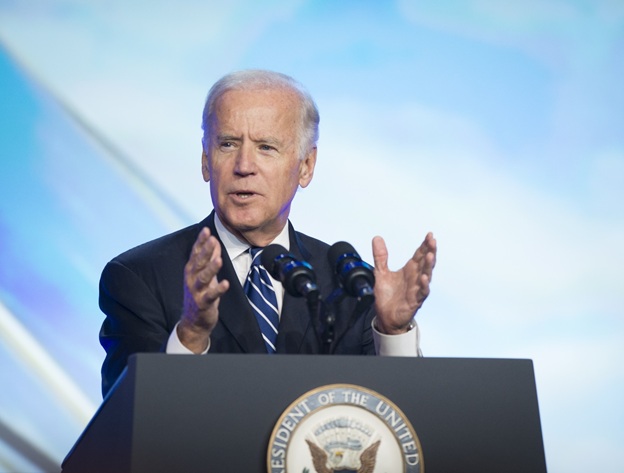 |
| Vice President Joe Biden at Solar Power International 2015, Credit: Steven Purcell for SPI 2015 |
「たくさんの米国人が太陽光発電の『可能性』を理解し始めました。今後も幾何級数的に増えるでしょう。太陽光発電でさらに何ができるかを想像してみてください。どんなにより良い雇用を創出できるか。どんなに心臓病や喘息で患う人を救えるか。どれだけ税金負担を減らせるか。私たちはとても大きな転換期にいます」と、同副大統領は産業の雇用創出と気候変動防止への大きな貢献を称えた。
「オバマ大統領と私が政権についてから、太陽光発電は20倍に拡大し、さらに雇用は17万4000人から86%増え、今年の終わりには21万人の雇用と予想されています。太陽光発電システムの設置数は2009年の2万件から今年末には100万件に達すると言われています」。...Read More Here
September 16, 2015
累積20GWを超えた米太陽光市場、2016年末まで毎月1GWの建設ラッシュ
Published at Nikkei Technology --- 全米太陽光発電協会(SEIA)と米GTM Research社の最新の太陽光発電市場レポート(U.S. Solar Market Insight Q2 2015)によると、米国の太陽光発電市場は2015年第2四半期時点で累計設置容量20MW超えた。これは、一般家庭約460万世帯分の年間使用電力量に相当する。
2015年上半期の導入量は2.7GWで、GTM社は2015年の太陽光発電導入量を前年比16%アップの7.7GWと予想している。つまり、2015年下後半期のみで約5GWが設置されることになる。さらに、2016年の市場は、飛躍的に伸び12GWを超えるとも予想している。これは今後、月平均1GW規模の太陽光発電が米国に導入されることを意味する。
2016年末までに税控除制度の駆け込み需要
価格低下の他に、成長のドライバーとなるのは、「Investment Tax Credit(ITC)」と呼ばれる投資税控除制度だ。これは2006年から始まった連邦レベルの制度で、再生可能エネルギーの設備投資に適用される。太陽光発電システムの所有者またはプロジェクトデベロッパーは、システム設置にかかる投資額の30%を税額控除できる。同制度は2008年ブッシュ政権下で延長・拡大されたが、2016年末で住宅用については終了し、非住宅用は現在の30%から拡大前の10%に下がることになっている。...Read More Here
2015年上半期の導入量は2.7GWで、GTM社は2015年の太陽光発電導入量を前年比16%アップの7.7GWと予想している。つまり、2015年下後半期のみで約5GWが設置されることになる。さらに、2016年の市場は、飛躍的に伸び12GWを超えるとも予想している。これは今後、月平均1GW規模の太陽光発電が米国に導入されることを意味する。
2016年末までに税控除制度の駆け込み需要
価格低下の他に、成長のドライバーとなるのは、「Investment Tax Credit(ITC)」と呼ばれる投資税控除制度だ。これは2006年から始まった連邦レベルの制度で、再生可能エネルギーの設備投資に適用される。太陽光発電システムの所有者またはプロジェクトデベロッパーは、システム設置にかかる投資額の30%を税額控除できる。同制度は2008年ブッシュ政権下で延長・拡大されたが、2016年末で住宅用については終了し、非住宅用は現在の30%から拡大前の10%に下がることになっている。...Read More Here
September 8, 2015
Japan Electricity Deregulation: Birth of Municipally Owned Electric Utilities
Published at Renewable Energy World --- The upcoming retail electricity deregulation in Japan next April will create a way for Japanese municipal governments to produce and supply locally generated renewable electricity. The Fukushima nuclear disaster in 2011 was a harsh wake-up call that quickly became a strong source of motivation for many local governments to take energy matters into their own hands in order to provide safe and clean electricity to their own citizens.
Nakanojo, a town in Gunma prefecture, established the nation’s first locally owned utility with the motto of “Locally Produced, Locally Consumed Renewable Energy.” The town is geotropically located in the middle of Japan and is famous for flowers and hot springs surrounded by deep-green mountains.
“When a former mayor of Nakanojo visited the tsunami disaster areas in northeastern Japan, he decided to make his town nuclear-power-free, and upon his return, he created a new department to develop renewable energy plants,” Masao Yamamoto, Naknojo renewable energy department, said. Yamamoto was transferred from the wastewater division to head the newly created department.
Back then, everyone in the town had little choice but to purchase electricity from Tokyo Electric Power Co. (TEPCO), which is the nation’s largest investor-owned electric utility (IOU) and is an owner of the Fukushima Daiichi Nuclear Power Station and 16 other nuclear reactors.
By utilizing the nation’s feed-in tariff (FIT) program, which was launched in July 2012, the town funded and developed two 2-MW solar photovoltaic (PV) systems with the FIT rate of ¥40/kWh per 20 years. The town also leased town-owned land to a private company in order to build a 1 MW PV project. By the end of 2013, a town with a population of only 18,000 had 3 large-scaled PV plants, producing 7,000 MWh of electricity annually.... Read More Here
Nakanojo, a town in Gunma prefecture, established the nation’s first locally owned utility with the motto of “Locally Produced, Locally Consumed Renewable Energy.” The town is geotropically located in the middle of Japan and is famous for flowers and hot springs surrounded by deep-green mountains.
“When a former mayor of Nakanojo visited the tsunami disaster areas in northeastern Japan, he decided to make his town nuclear-power-free, and upon his return, he created a new department to develop renewable energy plants,” Masao Yamamoto, Naknojo renewable energy department, said. Yamamoto was transferred from the wastewater division to head the newly created department.
Back then, everyone in the town had little choice but to purchase electricity from Tokyo Electric Power Co. (TEPCO), which is the nation’s largest investor-owned electric utility (IOU) and is an owner of the Fukushima Daiichi Nuclear Power Station and 16 other nuclear reactors.
 |
| 2-MW PV System operated by Nakanojo town, Credit: Nakanojo town |
By utilizing the nation’s feed-in tariff (FIT) program, which was launched in July 2012, the town funded and developed two 2-MW solar photovoltaic (PV) systems with the FIT rate of ¥40/kWh per 20 years. The town also leased town-owned land to a private company in order to build a 1 MW PV project. By the end of 2013, a town with a population of only 18,000 had 3 large-scaled PV plants, producing 7,000 MWh of electricity annually.... Read More Here
米国防総省が2025年までに再エネ3GWを導入へ、安全保障とコスト削減を両立
Published at Nikkei Technology --- 米国の陸軍、海軍、空軍、海兵隊の4つの軍を配下に抱える米国防総省は、2025年までに太陽光発電を含め出力3GWもの再生可能エネルギーの導入計画を掲げている。同省は、エネルギーコストの削減に加え、海外からの輸入燃料への依存度を減らすことで、エネルギーの安全保障と持続可能性を高める、というミッションを担っている。
米国防総省は年間200億ドルをエネルギー調達に費やし、約50億ガロンもの石油を消費するという、世界でも最大規模のエネルギー多消費型の組織である。同省は2025年までに消費するエネルギーの25%を再生可能エネルギーで賄うというゴールを立てた。同省の配下である陸軍、海軍、空軍は、それぞれ2025年までに最低1GWの再生可能エネルギーを導入すると公約している。3つの軍を合わせると3GWになるわけだ。
2014年度時点で同省は、1130以上の再生可能エネルギーに関するプロジェクトを進めている。地熱発電が発電量では全体の約50%を占める。さらに、2014年に陸軍が60MWのバイオマスをフォートドラム(Fort Drum)基地に導入したことにより、バイオマスの割合が21%までに高まった。次に太陽光発電が11%を占める。太陽光は、米国内の基地に645のシステムを設置し、発電している。
米国防総省の各組織は、軍事基地内に大規模・分散型発電所を建設する場合であっても、自らプロジェクトを所有せず、主にプロジェクトデベロッパーに開発・設置を委ね、長期間の電力購入契約(Power Purchase Agreement : PPA)を結ぶ。...Read More Here
米国防総省は年間200億ドルをエネルギー調達に費やし、約50億ガロンもの石油を消費するという、世界でも最大規模のエネルギー多消費型の組織である。同省は2025年までに消費するエネルギーの25%を再生可能エネルギーで賄うというゴールを立てた。同省の配下である陸軍、海軍、空軍は、それぞれ2025年までに最低1GWの再生可能エネルギーを導入すると公約している。3つの軍を合わせると3GWになるわけだ。
 |
| Navy signs US largest solar deals with Sempra, Credit: US Navy |
すでに再エネ比率は10%を超える
2015年5月に同省が発表したエネルギーマネジメントレポートによると、2014年度時点で、空軍は6.7%、陸軍11.3%、そして海軍は26.5%のエネルギー需要を再生可能エネルギーで賄っている。国防総省全体では12.3%になり、目標である25%の約半分まで達したことになる。2014年度時点で同省は、1130以上の再生可能エネルギーに関するプロジェクトを進めている。地熱発電が発電量では全体の約50%を占める。さらに、2014年に陸軍が60MWのバイオマスをフォートドラム(Fort Drum)基地に導入したことにより、バイオマスの割合が21%までに高まった。次に太陽光発電が11%を占める。太陽光は、米国内の基地に645のシステムを設置し、発電している。
米国防総省の各組織は、軍事基地内に大規模・分散型発電所を建設する場合であっても、自らプロジェクトを所有せず、主にプロジェクトデベロッパーに開発・設置を委ね、長期間の電力購入契約(Power Purchase Agreement : PPA)を結ぶ。...Read More Here
August 25, 2015
100 Percent Renewable Energy Charged EV Stations Allow Driving on Sunshine
Published at Renewable Energy World --- According to the Global EV Outlook 2015 published by the Clean Energy Ministerial’s Electric Vehicles Initiative (EVI), there were over 665,000 EVs on the road at the end of 2014. The U.S. represented the largest EV market (39 percent), followed by Japan (16 percent) and China (12 percent). Furthermore, global EV sales jumped up by 53 percent in 2014 and are expected to continue to grow at a healthy pace.
EVs are a pathway to achieving a sustainable transportation industry by reducing emissions of greenhouse gases while increasing energy security. However, if an accelerated demand of EVs triggers more usage of fossil fuel burned electricity, do EVs still provide a sustainable solution to the society?
In the U.S., Envision Solar, headquarted in San Diego, California, has developed the unique EV ARC (Electric Vehicle Autonomous Renewable Charger), which is the world’s first fully autonomous, mobile, and 100 percent solar charged EV station. While in the U.S., the average, grid-tied EV charging system supplies electricity, which mostly comes from fossil fueled power plants, the EV ARC provides 100 percent clean, renewable electricity for EVs in public areas.
Furthermore, being an off-grid system, the EV ARC does not require any foundations, trenching, electrical upgrades or even a building permit, which are required for regular, grid-tied stationary EV stations.
“We are changing the paradigm in EV charging. We are making it possible to drive in nothing but sunshine and to deploy EV chargers in minutes, not months,” said Desmond Weatley, CEO at Envision Solar.Read More Here
EVs are a pathway to achieving a sustainable transportation industry by reducing emissions of greenhouse gases while increasing energy security. However, if an accelerated demand of EVs triggers more usage of fossil fuel burned electricity, do EVs still provide a sustainable solution to the society?
In the U.S., Envision Solar, headquarted in San Diego, California, has developed the unique EV ARC (Electric Vehicle Autonomous Renewable Charger), which is the world’s first fully autonomous, mobile, and 100 percent solar charged EV station. While in the U.S., the average, grid-tied EV charging system supplies electricity, which mostly comes from fossil fueled power plants, the EV ARC provides 100 percent clean, renewable electricity for EVs in public areas.
Furthermore, being an off-grid system, the EV ARC does not require any foundations, trenching, electrical upgrades or even a building permit, which are required for regular, grid-tied stationary EV stations.
“We are changing the paradigm in EV charging. We are making it possible to drive in nothing but sunshine and to deploy EV chargers in minutes, not months,” said Desmond Weatley, CEO at Envision Solar.Read More Here
世界初、移動可能な独立型太陽光カーポート、再生可能エネルギー100%でEV充電
Published at Nikkei Technology --- 米国を含む23カ国の政府機関からなるクリーン・エネルギー・ミニストリアル(the Clean Energy Ministreal)によると、2014年末までに累積66万台以上の電気自動車(EV)が世界に出回っていた。この総出荷台数のうち、米国が39%のシェアを持ち、日本の(16%)と中国(12%)が続いている。
そんなEV出荷数で世界をリードする米国に、世界で最初の移動可能な太陽光発電カーポートシステムがお目見えした。すでに、米Google社も使用している。
EVはガソリンを必要とせず、走行時に二酸化炭素(CO2)を排出しない環境配慮型の次世代自動車として政府機関が普及拡大を進めている。しかし、EVが普及しても、もし充電する電気を、石炭や石油などの化石燃料による火力プラントで発電した場合、走行時はクリーンだが、まったく「CO2フリー」とは言えない。なぜなら火力発電は大量のCO2を排出し、温暖化問題を加速させるからである。
これらの問題を解決するために、カリフォルニア州サンディエゴ市に拠点を置くEnvision Solar社は、世界で最初の「移動可能な太陽光発電カーポートシステム」を開発した。その名は「EV ARC (Electric Vehicle Autonomous Renewable Charger:電気自動車自立運転再生可能エネルギー充電器)」...Read More Here
そんなEV出荷数で世界をリードする米国に、世界で最初の移動可能な太陽光発電カーポートシステムがお目見えした。すでに、米Google社も使用している。
EVはガソリンを必要とせず、走行時に二酸化炭素(CO2)を排出しない環境配慮型の次世代自動車として政府機関が普及拡大を進めている。しかし、EVが普及しても、もし充電する電気を、石炭や石油などの化石燃料による火力プラントで発電した場合、走行時はクリーンだが、まったく「CO2フリー」とは言えない。なぜなら火力発電は大量のCO2を排出し、温暖化問題を加速させるからである。
これらの問題を解決するために、カリフォルニア州サンディエゴ市に拠点を置くEnvision Solar社は、世界で最初の「移動可能な太陽光発電カーポートシステム」を開発した。その名は「EV ARC (Electric Vehicle Autonomous Renewable Charger:電気自動車自立運転再生可能エネルギー充電器)」...Read More Here
August 5, 2015
メガソーラーと住宅太陽光、コストと社会的便益を比べたら、どちらがメリット多い?
Published at Nikkei Technology --- もし同じ出力300MWの容量が設置されるとしたら、メガソーラー(大規模太陽光発電所)と何万件もの家の分散型太陽光発電システム(Distributed Generations:DG)、どちらの方が社会に対してメリットが多いのだろうか?
そんな質問に答えるべく、米The Brattle Groupコンサルティング会社の経済学者が研究・分析を行い、今年7月にその成果「Comparing Benefits and Generation Costs of PV Utility- and Residential-Scale Solar(発電所用と住宅用太陽光発電の社会的便益とコストの分析)」を発表した。今までエネルギーコスト、環境貢献に関する分析は、風力、水力など異なる発電技術の間で比べたものが多かったが、今回は太陽光発電という同じテクノロジーの異なる設置形態の間で比較・分析した。
分析の前提とした時期と場所は、2019年、コロラド州最大の電力会社であるXcel Energy社のサービス管轄内。そこに以下の2システムを設置したと仮定した。(1)計300MWの発電事業用のメガソーラーと、(2)同じく計300MW(各戸5kWを6万軒設置)の分散型住宅用太陽光発電システムで、これらを比べた。
The Brattle Group社は太陽光発電の導入により電力需要家に課されるコスト(電気料金負担)を「基準ケース」と5つのシナリオをもとに分析した。この結果、発電事業用のコストは6.6~11.7米セント/kWh、そして住宅用オーナー所有は12.3~19.3米セント/kWh、住宅用リースはで14.0~23.7米セント/kWhとなった... Read More Here
July 31, 2015
World Moves Toward 100 Percent Renewable Energy – First Electricity, Then Heating/Cooling, and Finally Transportation
Published at Renewable Energy World --- The exclusive use of energy from renewable resources in at least one sector has now become a feasible goal for 8 countries. Diane Moss, Founding Director of Renewables 100 Policy Institute, discussed this remarkable development at one of the conference sessions at Intersolar North America 2015.
Denmark, Scotland, and Aruba are among the nations with 100 percent renewable energy targets. Besides the 8 nations, the Institute has so far mapped 55 cities, 60 regions and 9 utilities across the world that have officially established 100 percent RE goals, and Moss points out that there may be more and that those numbers are steadily increasing.
Recent advancements in renewable technologies and rapid cost reductions have accelerated deployment of renewable energy, such as wind and solar photovoltaics (PV). Renewables have started becoming a mainstream energy source in many parts of the world.
According to the Global Status Report published by REN21, a Paris-based nonprofit group, the growth of renewable energy outpaced that of fossil fuels in the electricity sector in 2014, with a record 135 gigawatts (GW) of capacity added from wind, solar, hydropower, and other natural sources.
Renewable energy developments have been driven largely by government policies, which include the RE targets of cities, states, regions, and countries. Some governments or communities are driven to deploy more renewables to reduce dependency on imported fossil fuels (energy security), tackle climate change (environment), and/or stimulate local jobs (economy)....Read More Here
Denmark, Scotland, and Aruba are among the nations with 100 percent renewable energy targets. Besides the 8 nations, the Institute has so far mapped 55 cities, 60 regions and 9 utilities across the world that have officially established 100 percent RE goals, and Moss points out that there may be more and that those numbers are steadily increasing.
 |
| RE100 percent Around the World, Credit: Renewables 100 Policy Institute |
According to the Global Status Report published by REN21, a Paris-based nonprofit group, the growth of renewable energy outpaced that of fossil fuels in the electricity sector in 2014, with a record 135 gigawatts (GW) of capacity added from wind, solar, hydropower, and other natural sources.
Renewable energy developments have been driven largely by government policies, which include the RE targets of cities, states, regions, and countries. Some governments or communities are driven to deploy more renewables to reduce dependency on imported fossil fuels (energy security), tackle climate change (environment), and/or stimulate local jobs (economy)....Read More Here
July 13, 2015
米テキサス州とネバダ州、メガソーラー発電コストがすでに4セント/kWh以下に
Published at Nikkei Technology Online --- テキサス州オースティン市が運営する電力会社米Austin Energy社は今年4月に連系出力600MW相当のメガソーラー(大規模太陽光発電所)の一般競争入札を行った。5月中旬の公募締め切りまでに、なんと募集の約13倍に相当する8000MW(8GW)近くの応募があったと発表した。さらに、応募された8000MWの内、1295MW分の太陽光発電コストは何と4米セント/kWhを切ったという。
さらに、ネバダ州で民営電力会社の米NV Energy社から似たような発表があった。同社は100MWのメガソーラーからの電力を3.87米セント/kWhで購入するという契約をしたというものだ。このメガソーラーは米ファーストソーラーによって現在開発中の「Playa Solar 2」である。
オースティン市はテキサスの首都であり、人口は100万人以上に達する。同市運営の電力会社は全米にある地方自治体が経営する電気事業者(POU:Publicly-Owned Utilities またはMuni:Municipally-Owned Utilitiesとも呼ばれる)の中でトップ8に位置する。同市は地球温暖化対策として、太陽光発電を含む再生可能エネルギーの普及に向けた取り組みを今までに積極的に推進してきた。太陽光発電導入でも全米公営電力会社の中で7位である。
同市のエネルギーに対するミッションは「クリーン」、「安く」、そして「信頼性の高い」エネルギーを提供することである。同市の電力会社Austin Energy社は販売量では電力自由化が行われているテキサス州で8位、販売額では4位に位置する。平均電気料金単価も大手民間電力会社と比べると1~2米セント/kWh低くなっている。...Read More Here
さらに、ネバダ州で民営電力会社の米NV Energy社から似たような発表があった。同社は100MWのメガソーラーからの電力を3.87米セント/kWhで購入するという契約をしたというものだ。このメガソーラーは米ファーストソーラーによって現在開発中の「Playa Solar 2」である。
オースティン市はテキサスの首都であり、人口は100万人以上に達する。同市運営の電力会社は全米にある地方自治体が経営する電気事業者(POU:Publicly-Owned Utilities またはMuni:Municipally-Owned Utilitiesとも呼ばれる)の中でトップ8に位置する。同市は地球温暖化対策として、太陽光発電を含む再生可能エネルギーの普及に向けた取り組みを今までに積極的に推進してきた。太陽光発電導入でも全米公営電力会社の中で7位である。
同市のエネルギーに対するミッションは「クリーン」、「安く」、そして「信頼性の高い」エネルギーを提供することである。同市の電力会社Austin Energy社は販売量では電力自由化が行われているテキサス州で8位、販売額では4位に位置する。平均電気料金単価も大手民間電力会社と比べると1~2米セント/kWh低くなっている。...Read More Here
July 11, 2015
Japan's Long-term Energy Plan Shoots for Ultimate Balance in Economics, Environment and Safety
Published at Renewable Energy World --- What is 3E + S? It is neither a mathematics problem nor chemical equation. It is Japan’s latest long-term energy plan, which was released by Japan's Ministry of Economy, Trade and Industry (METI) on June 1stf for review. The draft plan aims to establish an optimum energy mix by the year 2030.
The three Es stand for the first letters in Energy Security, Economic Efficiency and Environment and the letter S stands for Safety. Safety is crucial to the energy plan in the wake of the world’s worst nuclear disaster since Chernobyl when the devastating tsunami and earthquake hit northeast Japan in 2011. Since the disasters, Japan’s electricity generation mix has drastically changed.
The fear of nuclear power plants led to the shutting down of 54 of the nation’s nuclear reactors, which used to provide about 30 percent of the nation electricity. To make up for the loss of electricity supplied by nuclear means, Japan turned its heads toward coal and Liquefied Natural Gas (LNG). The nation’s sharp increase in fossil fuel demand caused the price of LNG, linked to crude oil import price, to soar.
The transition from nuclear to fossil fuels caused the nation’s energy self-sufficiency percentage to plummet to a mere 6 percent and Japan’s greenhouse gasses to hit an alarming record high in 2013. The increase cost of fossil fuel imports and the nationwide feed-in tariff (FIT) program has also increased electricity prices by 30 percent for industry users and 20 percent for residential consumers.
New Plan to Reverse the Effect of Fossil Fuels
The 3E + S plan aims to reverse the effects brought by the increased consumption of fossil fuels. Japan specifically wants to improve its self-sufficiency to 25 percent above the pre-disaster level. It also hopes to control and reduce electricity cost for the nation’s industry to gain back a competitive advantage while reducing greenhouse gas emissions to the same level as the Western nations.Read More Here
The three Es stand for the first letters in Energy Security, Economic Efficiency and Environment and the letter S stands for Safety. Safety is crucial to the energy plan in the wake of the world’s worst nuclear disaster since Chernobyl when the devastating tsunami and earthquake hit northeast Japan in 2011. Since the disasters, Japan’s electricity generation mix has drastically changed.
The fear of nuclear power plants led to the shutting down of 54 of the nation’s nuclear reactors, which used to provide about 30 percent of the nation electricity. To make up for the loss of electricity supplied by nuclear means, Japan turned its heads toward coal and Liquefied Natural Gas (LNG). The nation’s sharp increase in fossil fuel demand caused the price of LNG, linked to crude oil import price, to soar.
The transition from nuclear to fossil fuels caused the nation’s energy self-sufficiency percentage to plummet to a mere 6 percent and Japan’s greenhouse gasses to hit an alarming record high in 2013. The increase cost of fossil fuel imports and the nationwide feed-in tariff (FIT) program has also increased electricity prices by 30 percent for industry users and 20 percent for residential consumers.
New Plan to Reverse the Effect of Fossil Fuels
The 3E + S plan aims to reverse the effects brought by the increased consumption of fossil fuels. Japan specifically wants to improve its self-sufficiency to 25 percent above the pre-disaster level. It also hopes to control and reduce electricity cost for the nation’s industry to gain back a competitive advantage while reducing greenhouse gas emissions to the same level as the Western nations.Read More Here
July 1, 2015
世界最大747MWのメガソーラーが米国で稼働、「2020年33%」達成へ
Published at Nikkei Technology --- 今年6月に連系出力579MW、太陽光パネルの設置容量747.3 MWのメガソーラー(大規模太陽光発電所)「Solar Star」がカリフォルニア州ロザモンドで運転を開始した(図1、図2)。世界最大規模である。年間発電量は最低でも1560GWhが見込まれ、なんと一般世帯約25万5000世帯の消費電力に相当する。
プロジェクトは2013年初めに着手され、米サンパワー製の高変換効率タイプの単結晶モジュール(太陽光パネル)を170万枚以上、採用した。最後のモジュールは今年3月に設置が終わり、プロジェクトの完成となった。架台システムは、太陽の方角に合わせてアレイの向きが自動的に変わる「追尾型」になっている。
 |
| "Sun Star (579 MW-DC)" the World Largest PV |
サンパワーは、モジュールの提供だけではなく、EPC(設計・調達・施工)サービスも担当した。プロジェクトの進行では、同社の「オアシス」と呼ばれるメガソーラーの開発・施工プロセスを簡素化したテクノロジーが使用された。さらにO&M(運転管理・保守点検)もサンパワーが手掛ける。
米Berkshire Hathaway Energy社の子会社BHE Solar社が、サンパワーからこのプロジェクトを買い取り、発電事業の主体となる。ちなみに、Berkshire Hathaway Energy社は著名投資家ウォーレン・バフェット氏率いる米投資会社、Berkshire Hathaway社傘下の電力事業会社である。
発電した電力は20年の長期電力購入契約に基づいて地元の民営電力会社Southern California Edison(SCE)が買い取る。全購入電力はSCEがカリフォルニア州の「再生可能エネルギー・ポートフォリオ基準(RPS:renewable portfolio standard)」を満たすために使う。Read More Here
June 17, 2015
Tokyo’s Renewable Energy Transformation To Be Showcased in the 2020 Olympics
Published at Renewable Energy World --- Last July, the Tokyo government launched a Tokyo Metropolis Renewable Energy Expansion Taskforce with a 10-year goal to raise renewable energy sources to 20 percent of the metropolis’ electricity consumption by the Summer Olympics in 2020.
Tokyo, known as the world’s most populous metropolis, is the largest energy consumer in Japan, consuming 10 percent of the nation’s entire electricity supply.
Homes and businesses in Tokyo consumed about 80,000 GWh of electricity in 2012. According to Mizuho Bank, of the total electricity consumption only 6 percent was supplied by renewable energy. Furthermore, most of the renewable energy was supplied via hydropower plants located outside of Tokyo owned by Tokyo Power Electric Company (TEPCO), a regional investor-owned utility. This means that only 480 GWh of renewable energy was actually generated within Tokyo.
Because Tokyo doesn’t have much land space to deploy utility-scale solar and wind farms like other parts of Japan, its efforts are focused on distributed generation systems.
To increase renewable energy sources to 20 percent from 6 percent in 10 years, Tokyo has the following goals:
Tokyo Solar Roof Register to Support Rooftop Expansion
According to data released by the Ministry of Economy, Trade, and Industry (METI), Tokyo has approximately 137 MW of the reserved capacity for residential PV systems under the nation’s FIT program. This is equivalent to 4 percent of the nation’s total reserved capacity and makes Tokyo the No. 9 residential solar state in the nation.Read More Here
 |
| Rendered image of the Tokyo Main Olympic Stadium (under construction), equipped with solar and other renewable energy technology. Credit: Zaha Hadid Architects |
Tokyo, known as the world’s most populous metropolis, is the largest energy consumer in Japan, consuming 10 percent of the nation’s entire electricity supply.
Homes and businesses in Tokyo consumed about 80,000 GWh of electricity in 2012. According to Mizuho Bank, of the total electricity consumption only 6 percent was supplied by renewable energy. Furthermore, most of the renewable energy was supplied via hydropower plants located outside of Tokyo owned by Tokyo Power Electric Company (TEPCO), a regional investor-owned utility. This means that only 480 GWh of renewable energy was actually generated within Tokyo.
Because Tokyo doesn’t have much land space to deploy utility-scale solar and wind farms like other parts of Japan, its efforts are focused on distributed generation systems.
To increase renewable energy sources to 20 percent from 6 percent in 10 years, Tokyo has the following goals:
- Install a cumulative capacity of 1 GW of on-site solar photovoltaic (PV) systems by 2024.
- Install 22 MW of PV on metropolis-owned buildings and facilities by 2020.
- Install 600 MW of commercial-scale co-generation system capacity by 2024.
Tokyo Solar Roof Register to Support Rooftop Expansion
According to data released by the Ministry of Economy, Trade, and Industry (METI), Tokyo has approximately 137 MW of the reserved capacity for residential PV systems under the nation’s FIT program. This is equivalent to 4 percent of the nation’s total reserved capacity and makes Tokyo the No. 9 residential solar state in the nation.Read More Here
手厚いハワイのEV普及策、高速優遇から駐車・充電の無料まで
Published at Nikkei Technology --- ハワイ州が、あの手この手で電気自動車(EV)の普及に力を入れている。高速道路の優遇に、駐車場や充電の無料など、とにかくEVユーザーに手厚い施策を次々と繰り出している。背景には、自動車による化石燃料の消費量が多く、州内のガソリン価格が高いという深刻な事情があるようだ(関連記事)。
2014年にハワイ州が消費した14億ガロン以上の石油のうち、自動車などの陸上交通機関が最大の4.5億ガロンを消費した。ハワイ州のガソリン価格も全米でトップのため、自動車による石油燃料の消費量削減は、重要な政策課題の1つになっている。
1000台中4台がEV
米国政府の2014年の統計によると、ハワイ州はEVの導入量でカリフォルニア州に次ぐ全米2位であった。ハワイ州で登録された新車に占めるEVの比率は、1000台に4.2台の割合という。ちなみにカリフォルニア州では、1000台に5.5台の割合である。
ハワイ州はEV導入を拡大するため、高速道路での優遇や駐車料金の免除、無料の充電設備の整備などを推進している。このうち高速道路での優遇は、「HOV(high-occupancy vehicle)車線」と呼ばれる同乗者が複数以上の車が優先的に走れる車線を、EVであれば同乗者がいなくても通行できる制度がある。...Read More
2014年にハワイ州が消費した14億ガロン以上の石油のうち、自動車などの陸上交通機関が最大の4.5億ガロンを消費した。ハワイ州のガソリン価格も全米でトップのため、自動車による石油燃料の消費量削減は、重要な政策課題の1つになっている。
1000台中4台がEV
米国政府の2014年の統計によると、ハワイ州はEVの導入量でカリフォルニア州に次ぐ全米2位であった。ハワイ州で登録された新車に占めるEVの比率は、1000台に4.2台の割合という。ちなみにカリフォルニア州では、1000台に5.5台の割合である。
ハワイ州はEV導入を拡大するため、高速道路での優遇や駐車料金の免除、無料の充電設備の整備などを推進している。このうち高速道路での優遇は、「HOV(high-occupancy vehicle)車線」と呼ばれる同乗者が複数以上の車が優先的に走れる車線を、EVであれば同乗者がいなくても通行できる制度がある。...Read More
June 11, 2015
全米初の「再エネ100%」法案が可決、ハワイ州が2045年に義務付け
Published at Nikkei Technology --- ハワイ州が導入を検討してきた、米国初の「再生可能エネルギー100%法案」が、ついに正式可決となった。2015年6月8日に、ハワイ州知事のDavid Ige氏が法案の導入に署名した。
この法律によって、ハワイ州で電力を販売する電力事業者は、2045年までに全ての電力供給源を太陽光発電や風力などの再生可能エネルギーにすることが義務付けられた。
州知事のIge氏は法案の成立について、「全米で最も化石燃料に頼るハワイ州は、年間約50億米ドルを化石燃料の輸入に費やしてきた。化石燃料から再生可能エネルギーに移行すれば、燃料費を州内に留めることができる。つまり今回の法律によって、環境とエネルギーを保全するとともに、経済の活性化が可能になる」と述べた。..Read More Here
June 6, 2015
蓄電池の入札に60倍以上の応募、州政府の設置義務で市場拡大へ
Published at Nikkei Technology Online --- 2014年12月に、カリフォルニア州で最大規模の電力会社である米Pacific Gas &Electric(PG&E)社が、78MWの蓄電池の競争入札を開始した。2015年2月末の締め切りまでに、なんと募集の約64倍に相当する5000MW以上の応募があったという。
PG&E社を含むカリフォルニア州の大手電力会社3社は合計で、2015年中に200MWの蓄電池を落札する予定である。3社による入札は、今後も2016年と2018年、2020年に予定されている。米国でエネルギー貯蔵用の蓄電池の市場が急速に拡大しそうだ。
州政府が蓄電池の設置を義務付け
カリフォルニア州は、2020年までに再生可能エネルギーによる電力販売比率を33%にする目標を設定している。同州の電力会社は、この目標を予定よりも早く達成できる勢いで太陽光発電などの再生可能エネルギーの導入を進めている。
しかし、再生可能エネルギーの大規模導入に伴って生じる、電圧変動などの電力系統への悪影響が顕著になってきたため、同州は民間電力会社 3 社(米Southern California Edison(SCE)社、PG&E社、米San Diego Gas & Electric(SDG&E)社)に、2020 年までに合計1325MWのエネルギー貯蔵用蓄電池の設置を義務付けた。州政府が電力会社に対して、蓄電池の設置を義務付ける法律を制定したのは、これが米国で最初の例となった。See More Here
PG&E社を含むカリフォルニア州の大手電力会社3社は合計で、2015年中に200MWの蓄電池を落札する予定である。3社による入札は、今後も2016年と2018年、2020年に予定されている。米国でエネルギー貯蔵用の蓄電池の市場が急速に拡大しそうだ。
州政府が蓄電池の設置を義務付け
カリフォルニア州は、2020年までに再生可能エネルギーによる電力販売比率を33%にする目標を設定している。同州の電力会社は、この目標を予定よりも早く達成できる勢いで太陽光発電などの再生可能エネルギーの導入を進めている。
しかし、再生可能エネルギーの大規模導入に伴って生じる、電圧変動などの電力系統への悪影響が顕著になってきたため、同州は民間電力会社 3 社(米Southern California Edison(SCE)社、PG&E社、米San Diego Gas & Electric(SDG&E)社)に、2020 年までに合計1325MWのエネルギー貯蔵用蓄電池の設置を義務付けた。州政府が電力会社に対して、蓄電池の設置を義務付ける法律を制定したのは、これが米国で最初の例となった。See More Here
May 29, 2015
ソーラーフレンドリーな電力会社はどこか
Published at Nikkei Technology Online --- 米国の多くの電力会社が加盟しているSEPA(Solar Electric Power Association:米国太陽発電電力協会)は、電力会社別の太陽光発電導入量ランキングを毎年4月に発表している。例えば、1年間の導入量や、電気需要者1人当たりの平均導入量、系統連系接続件数などのデータである。
SEPAによると、2014年度に米国では18万20000件の新しい太陽光発電システムが設置され、その合計導入量は5.3GW(交流換算)に上るという。導入量が多い電力会社がある州は、カリフォルニア(CA)、ハワイ(HI)、アリゾナ(AZ)、ニュージャージー(NJ)、そしてノースカロライナ(NC)だった。
米国では、3000以上の電力事業者が、年間で約3兆7237億kWhの電気を、約1億3000万件の家庭と1850万件の商業・産業用の顧客に提供している。米国エネルギー省(DOE)のエネルギー情報課のデータによると、2014年の総電気販売金額は38億9000万米ドルであった。See More Here
SEPAによると、2014年度に米国では18万20000件の新しい太陽光発電システムが設置され、その合計導入量は5.3GW(交流換算)に上るという。導入量が多い電力会社がある州は、カリフォルニア(CA)、ハワイ(HI)、アリゾナ(AZ)、ニュージャージー(NJ)、そしてノースカロライナ(NC)だった。
米国では、3000以上の電力事業者が、年間で約3兆7237億kWhの電気を、約1億3000万件の家庭と1850万件の商業・産業用の顧客に提供している。米国エネルギー省(DOE)のエネルギー情報課のデータによると、2014年の総電気販売金額は38億9000万米ドルであった。See More Here
May 21, 2015
Panasonic Ramps Up Japanese Solar Manufacturing to Meet Domestic Rooftop Demand
Published at Renewable Energy World --- Panasonic Corp, a Japanese electronics company, announced that it will expand its domestic solar cell and module production to meet the rooftop solar demand in Japan. The company will invest a total of 9.5 billion yen (US$78 million) in a cell production plant in Shimane Prefecture and a module plant in Shiga Prefecture.
The company’s current HIT production capacity is 900 MW per year, of which 300 MW is produced in Malaysia and 600 MW in Japan. The new investment will boost the domestic production capacity 150 MW to total 750 MW by March 2016, making its total annual production capacity more than 1 GW.
Panasonic’s solar cells, known as HIT, are hetero-junction cells composed of monocrystalline and amorphous silicon. Panasonic reached a conversion efficiency of 25.6 percent last year at the research level, and 22.5 percent at the mass production level. Since high-efficiency cells enable more power per square foot than conventional solar cells, they provide a greater advantage to the majority of Japanese homes and offices, which have very limited roof-space.
The company will allocate the boosted domestic production capacity solely to the domestic market, specifically residential and rooftop systems below 500 kW while allocating modules produced in Malaysia to overseas markets.
Furthermore, as the domestic production ramps up, the company will phase out outsourced modules. The company has outsourced multicrystalline solar modules under an original equipment manufacturer (OEM) contract from Europe in order to meet demand for a large quantity of relatively inexpensive modules used for Mega Solar projects. In the fiscal year 2014, ending in March 2015, the outsourced solar modules represented approximately 18 percent of the company’s entire solar module sales, but the increased domestic production capacity will eventually replace all the outsourced modules... Read More Here
The company’s current HIT production capacity is 900 MW per year, of which 300 MW is produced in Malaysia and 600 MW in Japan. The new investment will boost the domestic production capacity 150 MW to total 750 MW by March 2016, making its total annual production capacity more than 1 GW.
Panasonic’s solar cells, known as HIT, are hetero-junction cells composed of monocrystalline and amorphous silicon. Panasonic reached a conversion efficiency of 25.6 percent last year at the research level, and 22.5 percent at the mass production level. Since high-efficiency cells enable more power per square foot than conventional solar cells, they provide a greater advantage to the majority of Japanese homes and offices, which have very limited roof-space.
The company will allocate the boosted domestic production capacity solely to the domestic market, specifically residential and rooftop systems below 500 kW while allocating modules produced in Malaysia to overseas markets.
Furthermore, as the domestic production ramps up, the company will phase out outsourced modules. The company has outsourced multicrystalline solar modules under an original equipment manufacturer (OEM) contract from Europe in order to meet demand for a large quantity of relatively inexpensive modules used for Mega Solar projects. In the fiscal year 2014, ending in March 2015, the outsourced solar modules represented approximately 18 percent of the company’s entire solar module sales, but the increased domestic production capacity will eventually replace all the outsourced modules... Read More Here
May 19, 2015
Born from Disaster: Japan Establishes First Microgrid Community
Published at Renewable Energy World --- Following the 2011 earthquake, tsunami and nuclear disaster in Japan, one city decided to transition to a clean, renewable future and became Japan's first microgrid community.
Although Japan's Fukushima prefecture is most commonly associated with the 2011 disaster due to the nuclear power melt-down, Miyazaki prefecture, located north of Fukushima, suffered the largest death toll, close to 10,000, and the largest flood damage in the nation.
Located on the coast, Higashimatsushima city was no exception. It had a catastrophic tsunami-caused flood, which put 65 percent of the city under water, with over 1,100 lives lost. Approximately 10,000 residents lost their homes and were forced to evacuate.
“After the disaster, some parts of the town didn’t get electricity for up to three months,” said Tohoru Ishigaki at the office of Future City Initiative under the city’s Department of Disaster Recovery Policy. “We strongly felt [after the disaster] that our responsibility was to provide reliable energy.”
Turn Local Tragedy Into a New and Vibrant Vision
To create a safe, resilient and sustainable society for the remaining population of 40,000, the city decided to deploy distributed, clean renewable energy sources. Under post-disaster recovery and reconstruction plans, the city set a bold goal to become a Net Zero Energy City by 2022, supplying the entire city with locally produced energy.
As a first step, the city turned a flood-affected former city park into a 2-MW solar photovoltaic (PV) project. This project symbolizes the city’s commitment to energy self-sufficiency. Mitsui & Co., Ltd, one of the largest trading company in Japan, completed this system in the summer 2013. The company also built PV carport systems with a total capacity of 270 kW at three locations on high ground, away from the vulnerable coastline. These sites are designated for evacuations and solar power will provide emergency power....Read More Here
Although Japan's Fukushima prefecture is most commonly associated with the 2011 disaster due to the nuclear power melt-down, Miyazaki prefecture, located north of Fukushima, suffered the largest death toll, close to 10,000, and the largest flood damage in the nation.
Located on the coast, Higashimatsushima city was no exception. It had a catastrophic tsunami-caused flood, which put 65 percent of the city under water, with over 1,100 lives lost. Approximately 10,000 residents lost their homes and were forced to evacuate.
“After the disaster, some parts of the town didn’t get electricity for up to three months,” said Tohoru Ishigaki at the office of Future City Initiative under the city’s Department of Disaster Recovery Policy. “We strongly felt [after the disaster] that our responsibility was to provide reliable energy.”
Turn Local Tragedy Into a New and Vibrant Vision
To create a safe, resilient and sustainable society for the remaining population of 40,000, the city decided to deploy distributed, clean renewable energy sources. Under post-disaster recovery and reconstruction plans, the city set a bold goal to become a Net Zero Energy City by 2022, supplying the entire city with locally produced energy.
As a first step, the city turned a flood-affected former city park into a 2-MW solar photovoltaic (PV) project. This project symbolizes the city’s commitment to energy self-sufficiency. Mitsui & Co., Ltd, one of the largest trading company in Japan, completed this system in the summer 2013. The company also built PV carport systems with a total capacity of 270 kW at three locations on high ground, away from the vulnerable coastline. These sites are designated for evacuations and solar power will provide emergency power....Read More Here
April 26, 2015
分散型太陽光の普及に赤信号、2016年にカリフォルニアで設置上限値に到達
Published at Nikkei Technology --- 前回の記事で紹介した「ネットメータリング」は、分散型太陽光発電システムによる“自産自消”を促すための制度である。太陽光発電による発電量で住宅などの電力消費量を相殺しながら、余剰発電量は次の月に繰り越して電気料金を削減する。この制度は、米国の分散型太陽光発電システムの普及に大きな役割を担ってきた(前回の記事)。
電力会社が余剰電力の購入価格を下げて、分散型太陽光発電システムの導入にブレーキをかけようとしていることを前回説明した。こうした電力会社の動きとは別に、早ければ2016年にも一部の地域でネットメータリングの見直しが始まる可能性がある。それには、分散型システムの導入を制限する「総設置容量上限」が関係する。
キャップを設置
州や電力会社のサービス管内で、法律や規制で定めた「キャップ(CAP)」と呼ばれる、ネットメータリングの総設置容量の上限がある。ネットメータリングを活用する分散型太陽光発電システムの総設置容量上限に達すると、電力会社は分散型太陽光発電システムの設置を基本的に拒否できるようになる。
ネットメータリング制度は、州の法律や州の公益事業委員会が定めたものである。各州で電力を販売する電力会社は、遵守する義務がある。州主導であるため、接続できるシステムの規模や余剰電力の取り扱い方、余剰電力の購入価格などが、州によって大きく異なる。もちろん、設置容量上限の値や、上限の決め方も州によって違う。州によっては、上限を州の再生可能エネルギー導入目標と同じにしている場合もある。
上限を定める基準として最も多く使われているのは、州または各電力会社の最大電力需要である。参照年と呼ばれる、特定の年の最大電力需要を上限の計算用に使う。ネットメータリング制度を施行しているのは、全米50州のうち43州とワシントンDCであり、この中の22州が最大電力需要を上限の基準に用いている。例えばユタ州は、2007年の最大電力需要の20%を総設置容量の上限としている。イリノイ州やミズリー州は、前年の最大電力需要の5%で上限を計算する。。。Read More Here
電力会社が余剰電力の購入価格を下げて、分散型太陽光発電システムの導入にブレーキをかけようとしていることを前回説明した。こうした電力会社の動きとは別に、早ければ2016年にも一部の地域でネットメータリングの見直しが始まる可能性がある。それには、分散型システムの導入を制限する「総設置容量上限」が関係する。
キャップを設置
州や電力会社のサービス管内で、法律や規制で定めた「キャップ(CAP)」と呼ばれる、ネットメータリングの総設置容量の上限がある。ネットメータリングを活用する分散型太陽光発電システムの総設置容量上限に達すると、電力会社は分散型太陽光発電システムの設置を基本的に拒否できるようになる。
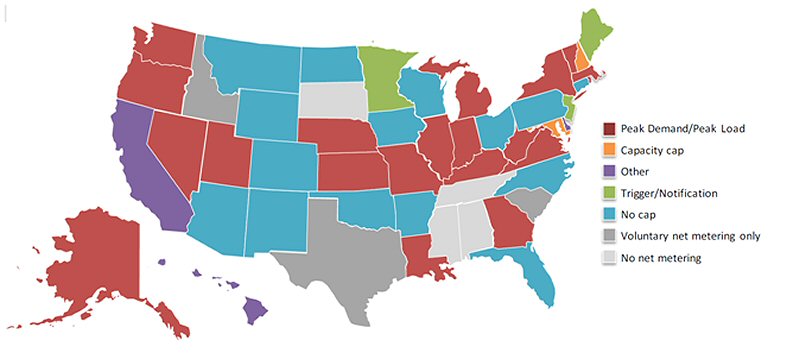 |
| Net Metering Cap by State, Credit: National Renewable Energy Laboratory |
ネットメータリング制度は、州の法律や州の公益事業委員会が定めたものである。各州で電力を販売する電力会社は、遵守する義務がある。州主導であるため、接続できるシステムの規模や余剰電力の取り扱い方、余剰電力の購入価格などが、州によって大きく異なる。もちろん、設置容量上限の値や、上限の決め方も州によって違う。州によっては、上限を州の再生可能エネルギー導入目標と同じにしている場合もある。
上限を定める基準として最も多く使われているのは、州または各電力会社の最大電力需要である。参照年と呼ばれる、特定の年の最大電力需要を上限の計算用に使う。ネットメータリング制度を施行しているのは、全米50州のうち43州とワシントンDCであり、この中の22州が最大電力需要を上限の基準に用いている。例えばユタ州は、2007年の最大電力需要の20%を総設置容量の上限としている。イリノイ州やミズリー州は、前年の最大電力需要の5%で上限を計算する。。。Read More Here
April 22, 2015
California’s First Zero Net Energy Community Opens on Earth Day to Support Bold State Goals
Published at Renewable Energy World --- Say hello to your dream home and goodbye to rising electric bills. Meritage Homes, headquarted in Scottsdale Arizona, will reveal California’s first and only Net Zero Community on this year’s Earth Day, April 22. The homebuilder has partnered with leading energy companies to develop a community called Sierra Crest with 20 zero net energy (ZNE) homes in North Fontana area.
Currently the energy used in homes and buildings is the second largest contributor to California’s greenhouse gas (GHG) emissions. ZNE homes and buildings can help reduce the state’s energy demand and environmental impacts associated with homes and buildings, providing more resilience to climate impacts.
“There are several ZNE homes throughout California, but none clustered at one community,” commented CR Herro, Vice President of Environmental Affairs at Meritage Homes. “This community not only allows the value of operation cost reduction to the homeowners, but provides much needed data to the utilities about kW production and demand at each home, and cumulatively at the transformer level to provide needed data to design service for community level Zero Energy as California building code progresses toward this standard.”
Meritage Homes along with BIRAenergy, Itron and Southern California Edison (SCE) will work with the Electric Power Research Institute (EPRI) and California Public Utilities Commission (CPUC) to evaluate the energy use and grid integration of this new community and investigate economic feasibility to support California’s “big bold goal.”
In 2008, California set bold energy-use reduction goals — all new residential construction will be zero net energy by 2020 and commercial buildings by 2030. New homes and buildings will achieve ZNE first through high levels of energy efficiency, and then through the addition of clean, on-site renewable power generation, typically solar PV to meet 100 percent of their annual energy need.... Read More Here
 |
| Zero Net Energy Homes at Fontana, California. Credit: Meritage Homes. |
“There are several ZNE homes throughout California, but none clustered at one community,” commented CR Herro, Vice President of Environmental Affairs at Meritage Homes. “This community not only allows the value of operation cost reduction to the homeowners, but provides much needed data to the utilities about kW production and demand at each home, and cumulatively at the transformer level to provide needed data to design service for community level Zero Energy as California building code progresses toward this standard.”
Meritage Homes along with BIRAenergy, Itron and Southern California Edison (SCE) will work with the Electric Power Research Institute (EPRI) and California Public Utilities Commission (CPUC) to evaluate the energy use and grid integration of this new community and investigate economic feasibility to support California’s “big bold goal.”
In 2008, California set bold energy-use reduction goals — all new residential construction will be zero net energy by 2020 and commercial buildings by 2030. New homes and buildings will achieve ZNE first through high levels of energy efficiency, and then through the addition of clean, on-site renewable power generation, typically solar PV to meet 100 percent of their annual energy need.... Read More Here
April 20, 2015
Japan Solar Boom Spurred by Low-Interest Loans from Local Banks, Credit Unions, Utilities
Published at Renewable Energy World --- San Diego, Calif. — The U.S. residential solar photovoltaic (PV) market is on the rise. According to SEIA/GTM Research, in 2014 the residential market surpassed the non-residential market for the first time. "The past three years have now seen the residential market grow by at least 50 percent on an annual basis, buoyed by major strides to lower soft costs, in tandem with increased penetration of third party financing solutions,” commented Cory Honeyman, Solar Analyst at GTM Research.
While the third-party ownership (TPO) financing option has been the strong driver for the last several years, solar loans, which provide ownerships to homeowners, are now moving into the mainstream.
Japan, which installed almost twice as many residential PV installations as the U.S. in 2014, is one of the world's largest residential PV markets in terms of cumulative installations. The country’s residential PV market has achieved this with only two PV financing options: cash and loans. It has not offered leasing or power purchase agreements, which are common in the U.S.
“About forty percent of our customers buy PV systems with cash and the remaining 60 percent of our customers use solar loans,” said a manager of one of the largest residential PV installers in Japan.
According to the manager, the average purchase cost of a system (3-4 kW-DC) the company sells is approximately ¥1.5 million ($12,600), and for those who don’t have bundles of cash stashed away in the home, the company offers solar loans through three consumer credit financing companies. All three of them offer 10- or 15-year unsecured loans with low, fixed interest rates....Read More Here
While the third-party ownership (TPO) financing option has been the strong driver for the last several years, solar loans, which provide ownerships to homeowners, are now moving into the mainstream.
Japan, which installed almost twice as many residential PV installations as the U.S. in 2014, is one of the world's largest residential PV markets in terms of cumulative installations. The country’s residential PV market has achieved this with only two PV financing options: cash and loans. It has not offered leasing or power purchase agreements, which are common in the U.S.
“About forty percent of our customers buy PV systems with cash and the remaining 60 percent of our customers use solar loans,” said a manager of one of the largest residential PV installers in Japan.
According to the manager, the average purchase cost of a system (3-4 kW-DC) the company sells is approximately ¥1.5 million ($12,600), and for those who don’t have bundles of cash stashed away in the home, the company offers solar loans through three consumer credit financing companies. All three of them offer 10- or 15-year unsecured loans with low, fixed interest rates....Read More Here
April 19, 2015
電力会社が住宅用太陽光の増加に警戒、ネットメータリング廃止へ
Published at Nikkei Technology --- 米国における2014年の太陽光発電システム導入量は、対前年比30%増の6.2GWになった。特筆すべき変化は、住宅用が産業・商業用を初めて抜いたことだ。住宅用の年間成長率は50%を越える(全米太陽光発電協会(SEIA)と米GTM Research社の最新の太陽光発電市場レポートによる)。
ただし住宅用の好調は長く続かない可能性もある。住宅用の成長を支えてきた「ネットメータリング(net-metering)」と呼ばれる制度を廃止しようとする動きがあるからだ。
半数が補助金なしで設置
GTM Research社でソーラーアナリストを務めるCory Honeyman氏によると、米国の住宅用太陽光発電システム市場は、2012~2014年の過去3年間に、50%以上の年間成長率を続けてきた。
住宅用市場は、州政府の補助金に依存することなく拡大を続けているのが特徴だ。Honeyman氏によると、2014年に設置された太陽光発電システムの実に48%(500MWに相当)が、補助金制度を利用していないという。
補助金なしでも導入が進むのは、設置費用などの「ソフトコスト」の低下や、頭金などを必要としない「リーシング」と呼ばれるファイナンスオプションが存在することなどが背景にある。さらに、今回のテーマであるネットメータリングも、導入促進に大きな役割を果たしている。Read More Here
ただし住宅用の好調は長く続かない可能性もある。住宅用の成長を支えてきた「ネットメータリング(net-metering)」と呼ばれる制度を廃止しようとする動きがあるからだ。
半数が補助金なしで設置
GTM Research社でソーラーアナリストを務めるCory Honeyman氏によると、米国の住宅用太陽光発電システム市場は、2012~2014年の過去3年間に、50%以上の年間成長率を続けてきた。
住宅用市場は、州政府の補助金に依存することなく拡大を続けているのが特徴だ。Honeyman氏によると、2014年に設置された太陽光発電システムの実に48%(500MWに相当)が、補助金制度を利用していないという。
補助金なしでも導入が進むのは、設置費用などの「ソフトコスト」の低下や、頭金などを必要としない「リーシング」と呼ばれるファイナンスオプションが存在することなどが背景にある。さらに、今回のテーマであるネットメータリングも、導入促進に大きな役割を果たしている。Read More Here
March 26, 2015
電力会社が運営するコミュニティーソーラー、カリフォルニア州も推進へ
Published at Nikkei Technology --- 米国では「コミュニティーソーラー」が、開発業者や投資家から注目を集めている。コミュニティーソーラーは、日照などの理由で家や建物に太陽光発電システムを設置できない、もしくは設置条件が整っていても太陽光発電システムを設置する十分な資金がない、といった電力消費者に太陽光発電システムの利用を促す仕組みだ。
自宅の屋根や敷地内ではなく、地域社会(コミュニティー)内やその近くに設置された太陽光発電システム(コミュニティーソーラー)の一部を購入する。コミュニティーソーラーで発電した電力は、あたかも自宅に太陽光発電システムが設置されているかのように、電力会社に売ることができる。その電力によって、毎月の電気料金の支払額を削減する。
開発業者にとっては、太陽光発電システムの設置が困難だった電力消費者の開拓が可能になるというわけだ。
2006年に初の事例
米国初のコミュニティーソーラーは、2006年にワシントン州エレンスバーグ市に設置された70.5kWのシステムと言われている。現在、コロラド州やミネソタ州、カリフォルニア州など10州が、法律や規定でコミュニティーソーラーの導入を促進している。
米NREL(National Renewable Energy Laboratory)の発表したレポート「Status and Trends in the U.S. Voluntary Green Power Market(米国での自発的グリーンパワー市場の現状とトレンド)」によると、2014年9月時点で全米に合計40MWの64のコミュニティーソーラーが存在する。2014年9月時点で未完成の建設中のプロジェクトは60MW近くになるという。.. Read More Here
自宅の屋根や敷地内ではなく、地域社会(コミュニティー)内やその近くに設置された太陽光発電システム(コミュニティーソーラー)の一部を購入する。コミュニティーソーラーで発電した電力は、あたかも自宅に太陽光発電システムが設置されているかのように、電力会社に売ることができる。その電力によって、毎月の電気料金の支払額を削減する。
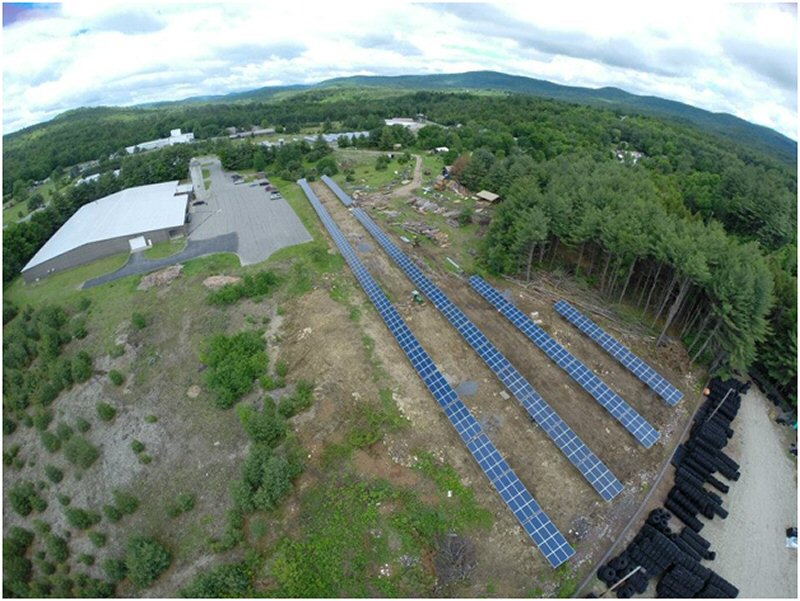 |
| 150 kW Community Solar System in Vermont, Credit: Soveren Solaris |
開発業者にとっては、太陽光発電システムの設置が困難だった電力消費者の開拓が可能になるというわけだ。
2006年に初の事例
米国初のコミュニティーソーラーは、2006年にワシントン州エレンスバーグ市に設置された70.5kWのシステムと言われている。現在、コロラド州やミネソタ州、カリフォルニア州など10州が、法律や規定でコミュニティーソーラーの導入を促進している。
米NREL(National Renewable Energy Laboratory)の発表したレポート「Status and Trends in the U.S. Voluntary Green Power Market(米国での自発的グリーンパワー市場の現状とトレンド)」によると、2014年9月時点で全米に合計40MWの64のコミュニティーソーラーが存在する。2014年9月時点で未完成の建設中のプロジェクトは60MW近くになるという。.. Read More Here
March 19, 2015
Post-FIT Japan: Manufacturers Promote PV Systems with Inverter-Integrated Energy Storage Systems
Published at Renewable Energy World --- The Japanese government has announced the new feed-in tariff (FIT) rate for the fiscal year 2015, effective April 1st. The new FIT rate for residential solar photovoltaic (PV) systems will be ¥33/kWh, down from ¥37/kWh the previous fiscal year.
“In a few years, the Japanese PV market will be shifted to the self-consumption mode, in which excess generated electricity (via PV) will be stored (instead of being sold) due to declining FIT incentive rates and raising electricity prices, and pushed by upcoming events such as the retail electricity deregulation in 2016 and utility restructuring of unbundling generation, transmission, and distribution in 2020,” said a manager from Sharp, a leading PV system maker in Japan.
The fiscal year 2015 represents the end of “premium” FIT rates that the national government promised to provide during the first three years (2012-2015) of the FIT program. PV homeowners and PV industry participants are uncertain about how much a new buy-out rate will be after this fiscal year. “People who are familiar with the electricity industry are projecting much lower rates — between ¥9 and ¥12/kWh,” commented a Japanese PV integrator about the post-FIT buy-out rate.... Read More Here
March 10, 2015
どうなるハワイの太陽光発電、フロリダの企業が電力会社を買収
Published at Nikkei Technology --- 2015年1月に、フロリダ州に拠点を置く米NextEra Energy社が、ハワイ州で最大の電力会社を持つ米Hawaiian Electric Industries (HEI)社の買収と合併の申請を、ハワイ州公益事業委員会(PUC:Public Utilities Commissions)に提出した。買収金額は43億米ドルと発表されている。この金額にはHEI社の13億米ドルの負債も含まれている。
NextEra社の子会社には、フロリダ州で最大、全米でも第3位の電力会社の米Florida Power & Light(FPL)社がある。さらに、別の子会社の米NextEra Energy Resource社は、北米で最大規模の太陽光発電所と風力発電所の開発会社として有名であり、カリフォルニア州に発電設置容量750MWの「McCoy Solar太陽光発電所」を建設している。
一方のHEI社は、電力会社の米Hawaiian Electric Co.(HECO)と米Maui Electric Company(MECO)、米Hawaii Electric Light Company(HELCO)を子会社に持つ。
なぜ、フロリダ州の電力会社が、本土から離れたハワイ州の電力会社を買収、合併しようとしているのだろうか。... Read More Here
NextEra社の子会社には、フロリダ州で最大、全米でも第3位の電力会社の米Florida Power & Light(FPL)社がある。さらに、別の子会社の米NextEra Energy Resource社は、北米で最大規模の太陽光発電所と風力発電所の開発会社として有名であり、カリフォルニア州に発電設置容量750MWの「McCoy Solar太陽光発電所」を建設している。
一方のHEI社は、電力会社の米Hawaiian Electric Co.(HECO)と米Maui Electric Company(MECO)、米Hawaii Electric Light Company(HELCO)を子会社に持つ。
なぜ、フロリダ州の電力会社が、本土から離れたハワイ州の電力会社を買収、合併しようとしているのだろうか。... Read More Here
February 22, 2015
スマート化するパワコン、ハワイ州における太陽光発電の大量導入問題を解決
Published at Nikkei Technology --- 日本では、再生可能エネルギーの導入量の急速な増加に対応するため、出力を時間単位で制御する新たなルールの運用が始まった。これに伴い、出力抑制の対象となるすべての事業者に、パワーコンディショナー(インバーター)の遠隔制御機能の搭載が義務付けられた。
同じように米国でも、パワーコンディショナーの高機能化が求められている。特に、分散型の太陽光発電システムの浸透率が高いハワイ州では、電力の安定供給に向けてパワーコンディショナーのスマート化が欠かせなくなっている。ハワイ州で最大の電力会社である米Hawaiian Electric Co. (HECO)は、パワーコンディショナーメーカーと共同で新しい基準作りに乗り出した。
接続申請が半減
ハワイ州は他の州と違って、配電網に接続する分散型住宅用システムが太陽光発電市場の大部分を占めている。さらに同州は、電力網が独立していることから、他の州に余剰電力を送電する柔軟性がない。
ハワイ州では過去3年間にわたって、分散型太陽光発電システムの導入量が急速に増加したことで、電力系統への悪影響が懸念されるようになった。例えば、9~17時の分散型太陽光発電システムからの電力供給量が、電力需要量を超える可能性がある。... Read More Here
同じように米国でも、パワーコンディショナーの高機能化が求められている。特に、分散型の太陽光発電システムの浸透率が高いハワイ州では、電力の安定供給に向けてパワーコンディショナーのスマート化が欠かせなくなっている。ハワイ州で最大の電力会社である米Hawaiian Electric Co. (HECO)は、パワーコンディショナーメーカーと共同で新しい基準作りに乗り出した。
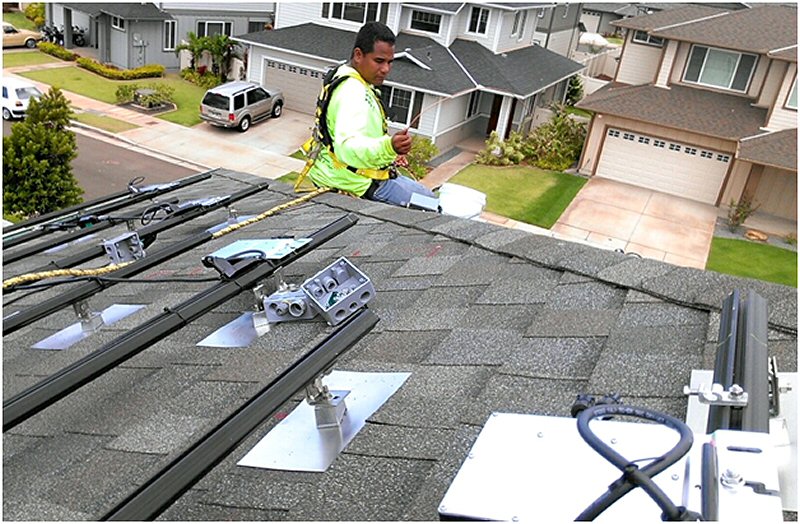 |
| Ehphase Microinverter Installation in Hawaii |
接続申請が半減
ハワイ州は他の州と違って、配電網に接続する分散型住宅用システムが太陽光発電市場の大部分を占めている。さらに同州は、電力網が独立していることから、他の州に余剰電力を送電する柔軟性がない。
ハワイ州では過去3年間にわたって、分散型太陽光発電システムの導入量が急速に増加したことで、電力系統への悪影響が懸念されるようになった。例えば、9~17時の分散型太陽光発電システムからの電力供給量が、電力需要量を超える可能性がある。... Read More Here
February 3, 2015
Fukushima, Japan Accelerating Deployment of Solar to Create Self-Reliant Communities
Published at Renewable Energy World --- This March will mark the four-year anniversary of when the world’s worst nuclear disaster since Chernobyl hit the northeast of Japan. Communities severely affected by the triple-disaster of earthquake, tsunami and nuclear meltdown have made a strong commitment to become energy self-reliant by producing safe, clean energy locally for local consumption.
The entire village of litate, located at 39 kilometers northwest of the Fukushima Daiichi Nuclear Power Plant, was forced to evacuate in order to avoid radiation exposure. To build a self-reliant community, a few of the villagers from litate got together to establish the litate Electric Power Company.
litate is building a 50-kW solar system, and upon completion of the system in February, it will sell the power output to local utility Tohoku Electric Power Co. under the nation’s feed-in tariff (FIT) program. The proceeds from energy sales will be re-invested into the community to build more renewable energy systems.Read More Here
The entire village of litate, located at 39 kilometers northwest of the Fukushima Daiichi Nuclear Power Plant, was forced to evacuate in order to avoid radiation exposure. To build a self-reliant community, a few of the villagers from litate got together to establish the litate Electric Power Company.
litate is building a 50-kW solar system, and upon completion of the system in February, it will sell the power output to local utility Tohoku Electric Power Co. under the nation’s feed-in tariff (FIT) program. The proceeds from energy sales will be re-invested into the community to build more renewable energy systems.Read More Here
 |
| Iitate Village in Fukushima, Japan |
February 2, 2015
太陽電池を搭載した中古住宅は高く売れるのか
Published at Nikkei Technology Online --- 米国では一生のうちに、平均7回も住宅を買い替えるといわれる。結婚や子供の誕生、転職などのライフスタイルの変化に合わせて、住宅を買い替えていく。住宅を購入してリフォームを実施し、価値が高まった時に売却して、高い家に住み替えるといった、投資的な買い替えもある。
米ホームビルダー協会(NAHB:National Associations of Home builders)によると、一般的な家庭では、平均13年間にわたって同じ住宅に住み続けるという。つまり13年ごとに、住宅を買い替えるわけだ。
住宅を頻繁に買い替える米国で、太陽光発電システムを設置した住宅は、どのような評価を得るのか。高く売れるのか、それとも買い手が太陽光発電システム搭載の住宅を敬遠してしまうのだろうか。その疑問に答える、ある調査・分析結果が明らかになった。
米エネルギー省のプロジェクト
住宅を売りに出す時、売り手側は少しでも価値を高めるために、ペンキを塗り替えたり、キッチンをリフォームしたり、床を張り替えるなどのアップグレードを実施する。物件を売る不動産会社(レアルター)や、物件の査定を手掛ける不動産鑑定士(アプレイザー)の間では、これらのアップグレードにどれくらいの価格を付けるかの、おおよその相場があるようだ。果たして不動産会社や不動産鑑定士は、屋根の上に太陽光発電システムが載っている住宅に出くわした時に、適切にその価値を鑑定する情報や知識を持っているのだろうか。... Read More Here
米ホームビルダー協会(NAHB:National Associations of Home builders)によると、一般的な家庭では、平均13年間にわたって同じ住宅に住み続けるという。つまり13年ごとに、住宅を買い替えるわけだ。
住宅を頻繁に買い替える米国で、太陽光発電システムを設置した住宅は、どのような評価を得るのか。高く売れるのか、それとも買い手が太陽光発電システム搭載の住宅を敬遠してしまうのだろうか。その疑問に答える、ある調査・分析結果が明らかになった。
米エネルギー省のプロジェクト
住宅を売りに出す時、売り手側は少しでも価値を高めるために、ペンキを塗り替えたり、キッチンをリフォームしたり、床を張り替えるなどのアップグレードを実施する。物件を売る不動産会社(レアルター)や、物件の査定を手掛ける不動産鑑定士(アプレイザー)の間では、これらのアップグレードにどれくらいの価格を付けるかの、おおよその相場があるようだ。果たして不動産会社や不動産鑑定士は、屋根の上に太陽光発電システムが載っている住宅に出くわした時に、適切にその価値を鑑定する情報や知識を持っているのだろうか。... Read More Here
January 21, 2015
再エネ比率「2030年50%」を宣言、カリフォルニア州知事 - 州ごとにエネルギー計画を策定
Published at Nikkei Technology --- カリフォルニア州の知事であるJerry Brown氏は、2015年1月の就任式で「2030年までに再生可能エネルギー電力の比率を50%に高める」と意欲的な目標を発表した。
カリフォルニア州はこれまでに、太陽光発電や太陽熱発電、地熱発電の導入で全米をリードしてきた。Brown州知事は、全米だけでなく世界においても、再生可能エネルギーの導入でリードしようというのである。再生可能エネルギーの導入を積極的に進めることで、温暖化ガスの排出量の削減だけでなく、産業の育成や、環境・健康被害を防ぐといった利点を得られる。
「50%」は実現可能な数値
カリフォルニア州において、電力販売量の半分を再生可能エネルギーで供給することは、実現不可能な目標ではないとみられている。すでにカリフォルニア州は、「再生可能エネルギー・ポートフォリオ基準(RPS:renewable portfolio standard)」によって、2020年までに州内の電力販売量の33%を再生可能エネルギーで賄う目標に向かって進んでいるからだ。...Read More Here
カリフォルニア州はこれまでに、太陽光発電や太陽熱発電、地熱発電の導入で全米をリードしてきた。Brown州知事は、全米だけでなく世界においても、再生可能エネルギーの導入でリードしようというのである。再生可能エネルギーの導入を積極的に進めることで、温暖化ガスの排出量の削減だけでなく、産業の育成や、環境・健康被害を防ぐといった利点を得られる。
「50%」は実現可能な数値
カリフォルニア州において、電力販売量の半分を再生可能エネルギーで供給することは、実現不可能な目標ではないとみられている。すでにカリフォルニア州は、「再生可能エネルギー・ポートフォリオ基準(RPS:renewable portfolio standard)」によって、2020年までに州内の電力販売量の33%を再生可能エネルギーで賄う目標に向かって進んでいるからだ。...Read More Here
January 12, 2015
What Do Noodles and Oranges Have in Common? Japanese Bioenergy
Published at Renewable Energy World --- San Diego, Calif. — In Japan, solar photovoltaic (PV) technology has been a center of attention ever since the nation’s government launched a very rich feed-in tariff (FIT) program. Although they are not getting the spotlight, there are also several unique biomass projects in Japan, which fully utilize locally-available resources such as noodles and oranges, without directly competing with consumable food production.
Udon Noodles to Create Udon Noodles
Kagawa prefecture is well known as a home of “sanuki” udon — square shaped noodles made by kneading together wheat flour, salt, and water. Sanuki udon noodles have a strong “koshi” (an al dente or firm-bite consistency). While many people enjoy and consume udon noodles daily, the prefecture faced a problem with a massive amount of udon noodle scraps from noodle manufacturers and unsellable noodles at local noodle shops.
Chiyoda Seisakujo, an industry equipment manufacturer located in Takamatsu city, the capital of Kagawa prefecture, has been developing biogas plants since 2004. Two prefecture-owned technology research and development centers approached the company, asking to utilize udon noodle waste as an ethanol feedstock ....Read More Here
.jpg) |
| Sanuki Udon Noodles Waste |
Udon Noodles to Create Udon Noodles
Kagawa prefecture is well known as a home of “sanuki” udon — square shaped noodles made by kneading together wheat flour, salt, and water. Sanuki udon noodles have a strong “koshi” (an al dente or firm-bite consistency). While many people enjoy and consume udon noodles daily, the prefecture faced a problem with a massive amount of udon noodle scraps from noodle manufacturers and unsellable noodles at local noodle shops.
Chiyoda Seisakujo, an industry equipment manufacturer located in Takamatsu city, the capital of Kagawa prefecture, has been developing biogas plants since 2004. Two prefecture-owned technology research and development centers approached the company, asking to utilize udon noodle waste as an ethanol feedstock ....Read More Here
January 5, 2015
太陽電池の西向き設置に補助金、「ダックカーブ現象」を解消へ
Published at Nikkei Technology --- 米国の太陽光発電の導入量でトップを独走し続けるカリフォルニア州。米国の太陽光発電導入量の半分を、カリフォルニア州が占めている。そんなカリフォルニア州で、太陽光発電の大量導入が近い将来に引き起こすであろう、需要と供給の「ミスマッチ」の解決策が話題になっている。解決策の1つとして、太陽電池モジュールの西向き設置が急浮上してきた。2014年から、西向き設置の新築住宅に補助金を増額する制度が始まったのだ。
2020年に太陽光が32%に
カリフォルニア州は「再生可能エネルギー・ポートフォリオ基準(RPS:Renewable Portfolio Standard)」によって、2020年までに州内の電力販売量の33%を再生可能エネルギーで賄うことを電力会社に義務付けている。州内の電力会社の報告をまとめると、2014年4月時点で20%に達しているという。2016年には25%に達する見込みだ。南カリフォルニアをサービスエリアとする米SDG&E社は、2014年12月時点で既に、再生可能エネルギーによる調達量が32%に達したという。Read More Here
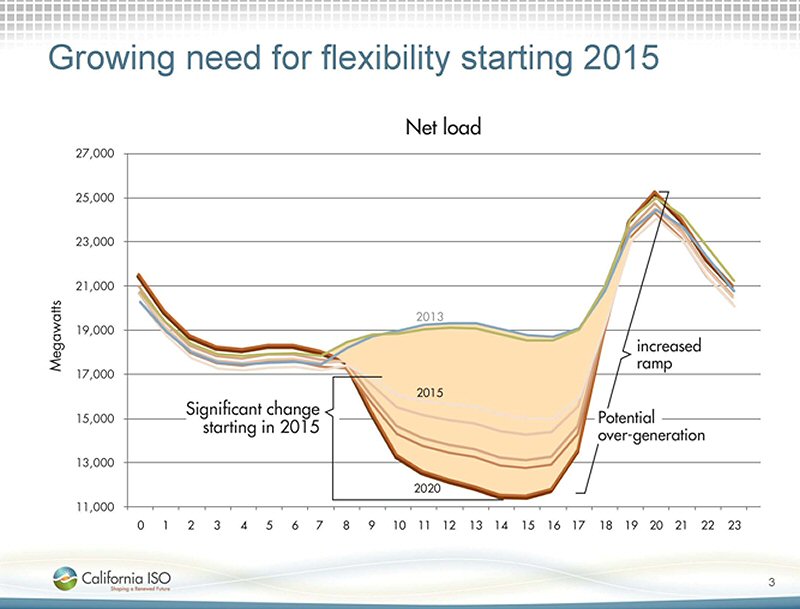 |
| California Duck Curve, source California ISO |
2020年に太陽光が32%に
カリフォルニア州は「再生可能エネルギー・ポートフォリオ基準(RPS:Renewable Portfolio Standard)」によって、2020年までに州内の電力販売量の33%を再生可能エネルギーで賄うことを電力会社に義務付けている。州内の電力会社の報告をまとめると、2014年4月時点で20%に達しているという。2016年には25%に達する見込みだ。南カリフォルニアをサービスエリアとする米SDG&E社は、2014年12月時点で既に、再生可能エネルギーによる調達量が32%に達したという。Read More Here
 |
| The article was ranked as the Most Read Article of the Week |
太陽電池の接続トラブルを系統の「見える化」で解決 (Grid Issue with Deploying Large Capacity of PV)
 |
| Nikkei Electronics January 5 2015 Issue |
 |
| Daily Electricity Load in Hawaii - Elephant Shape; Source: HECO |
Subscribe to:
Posts (Atom)






